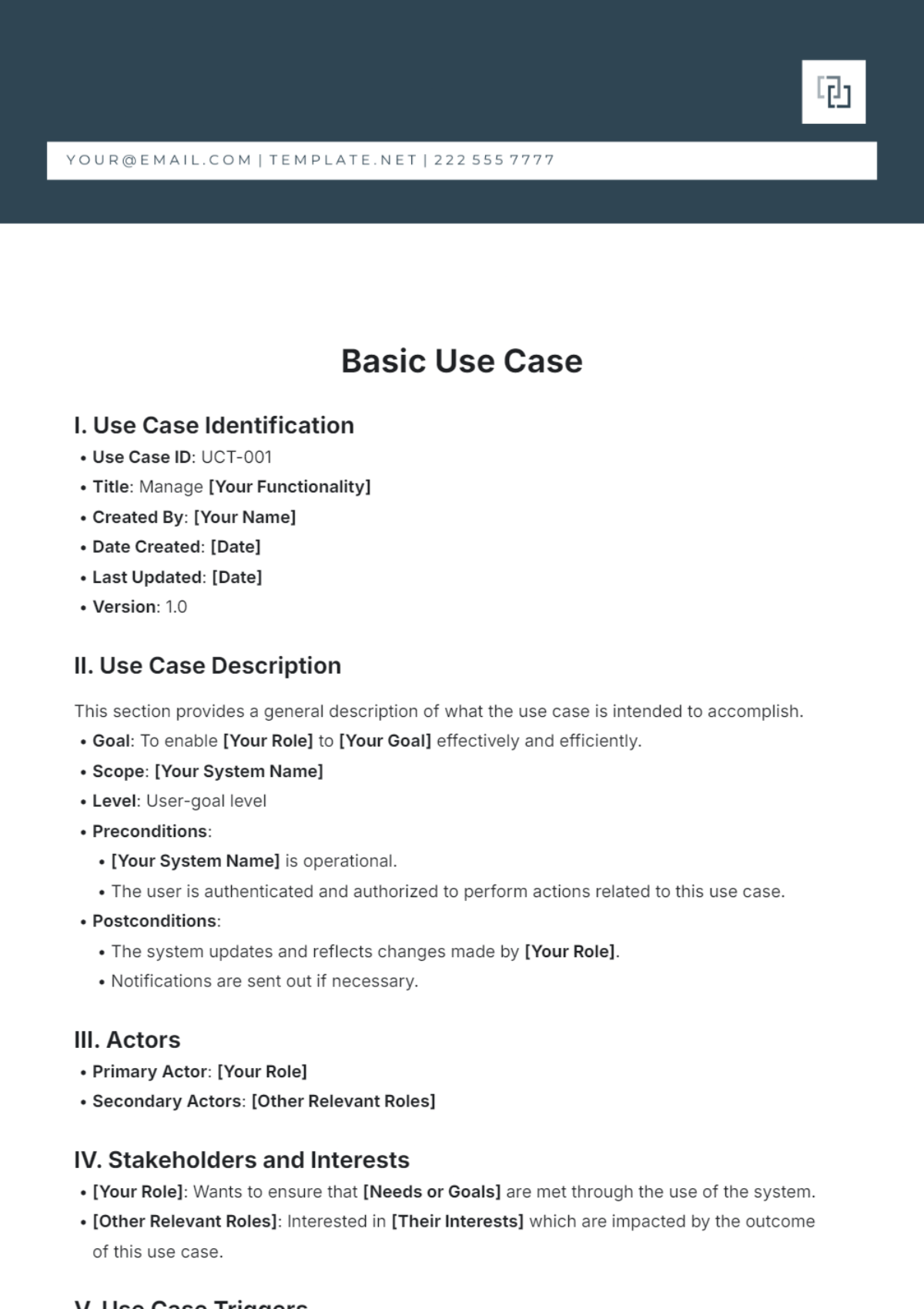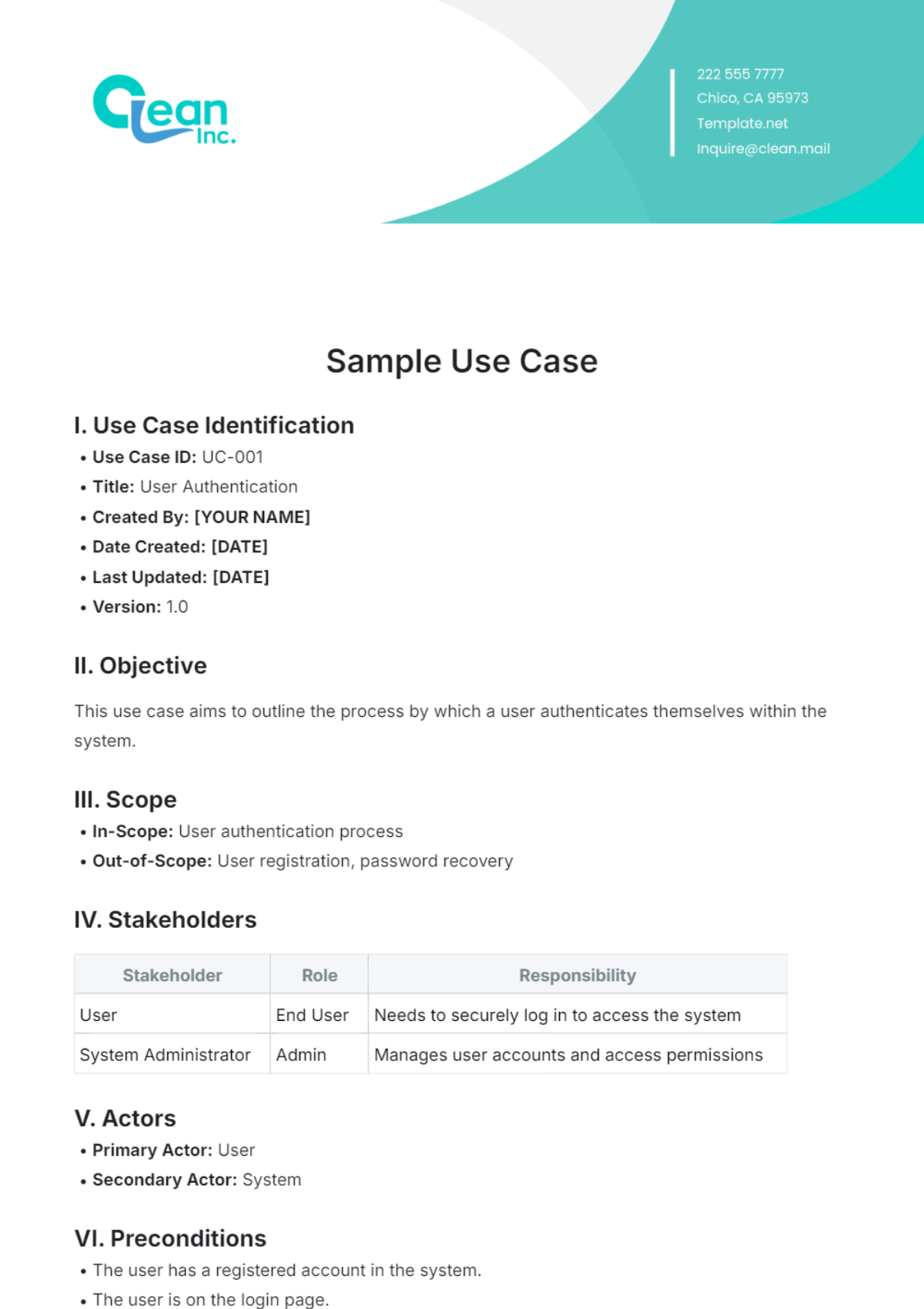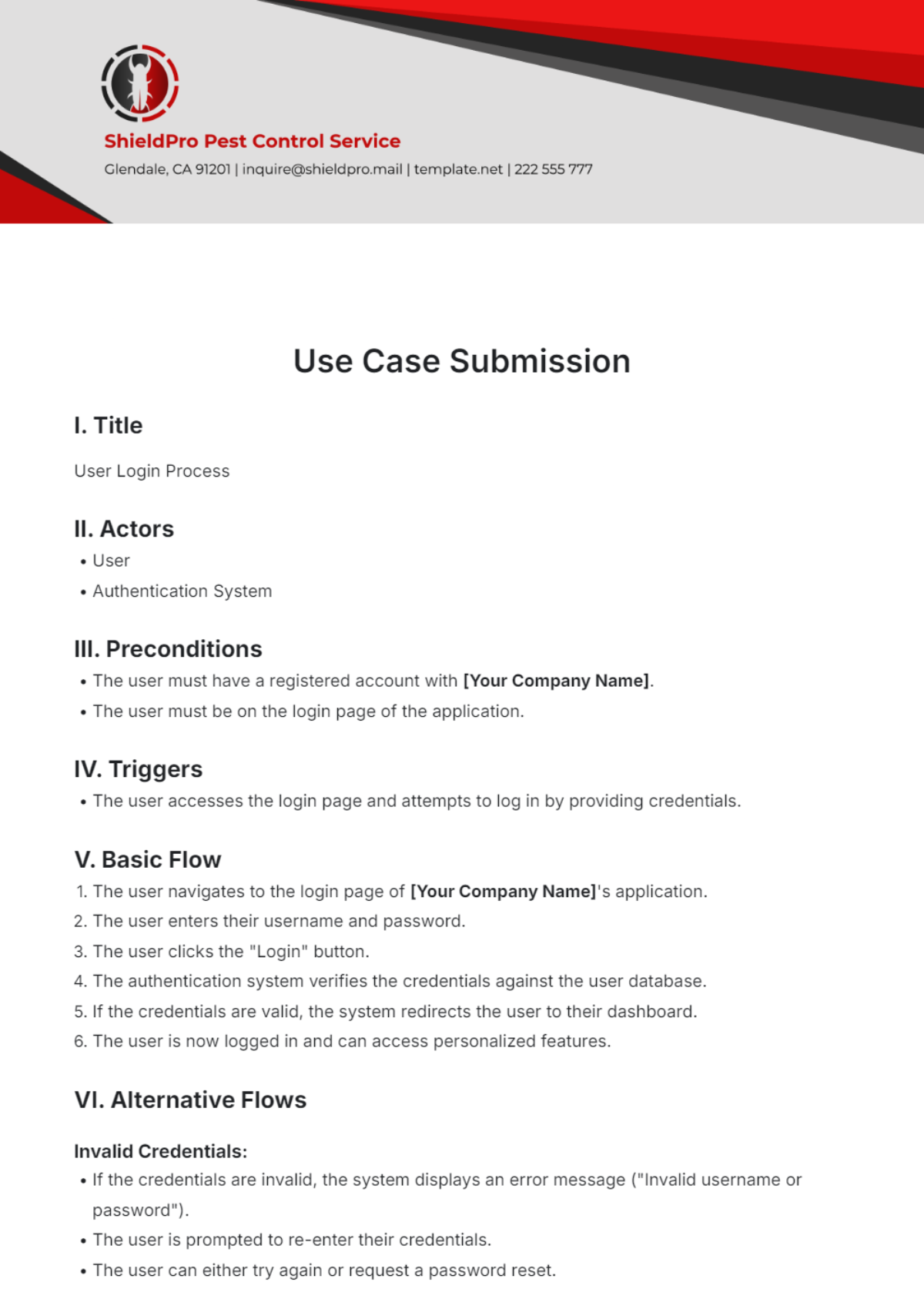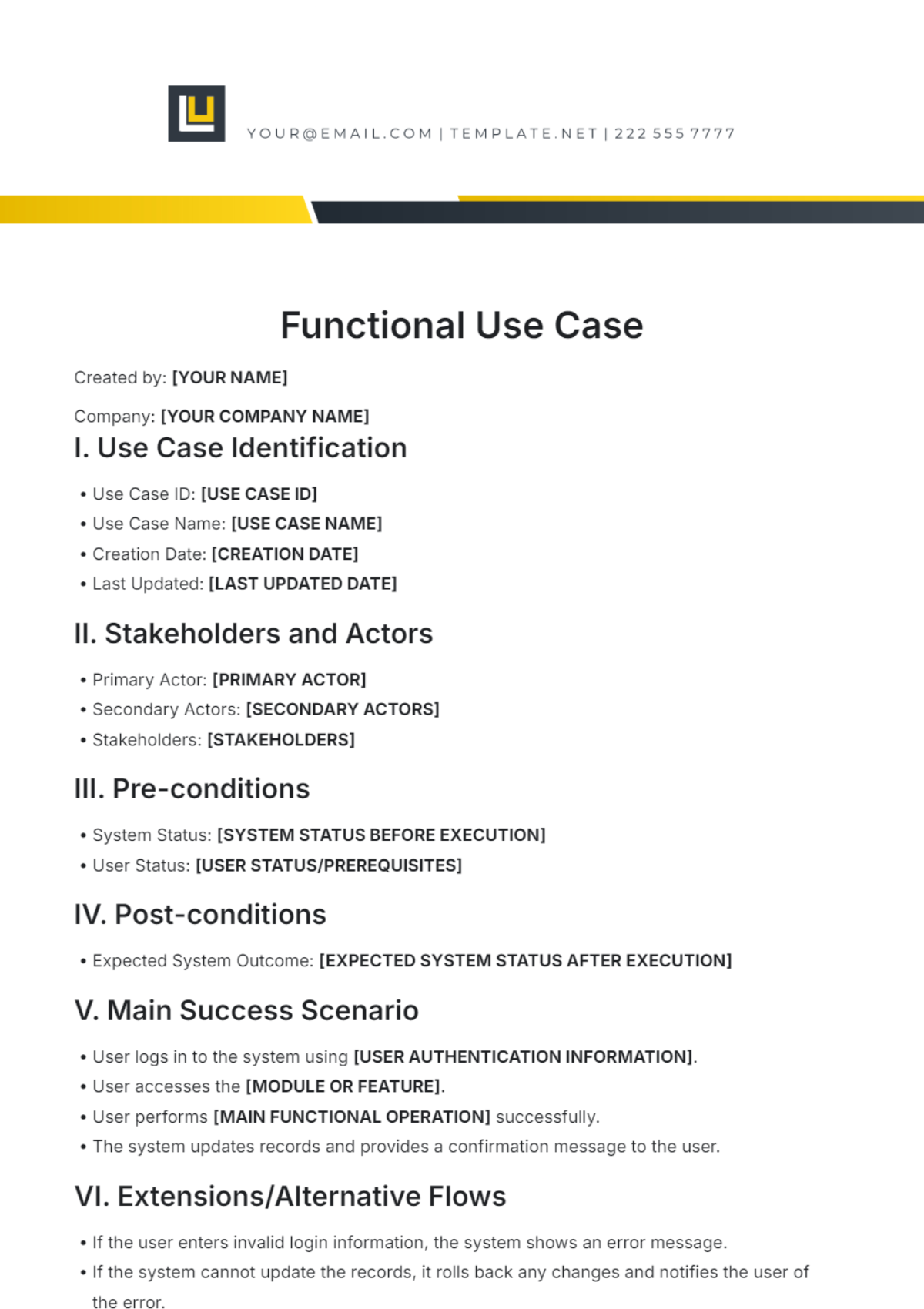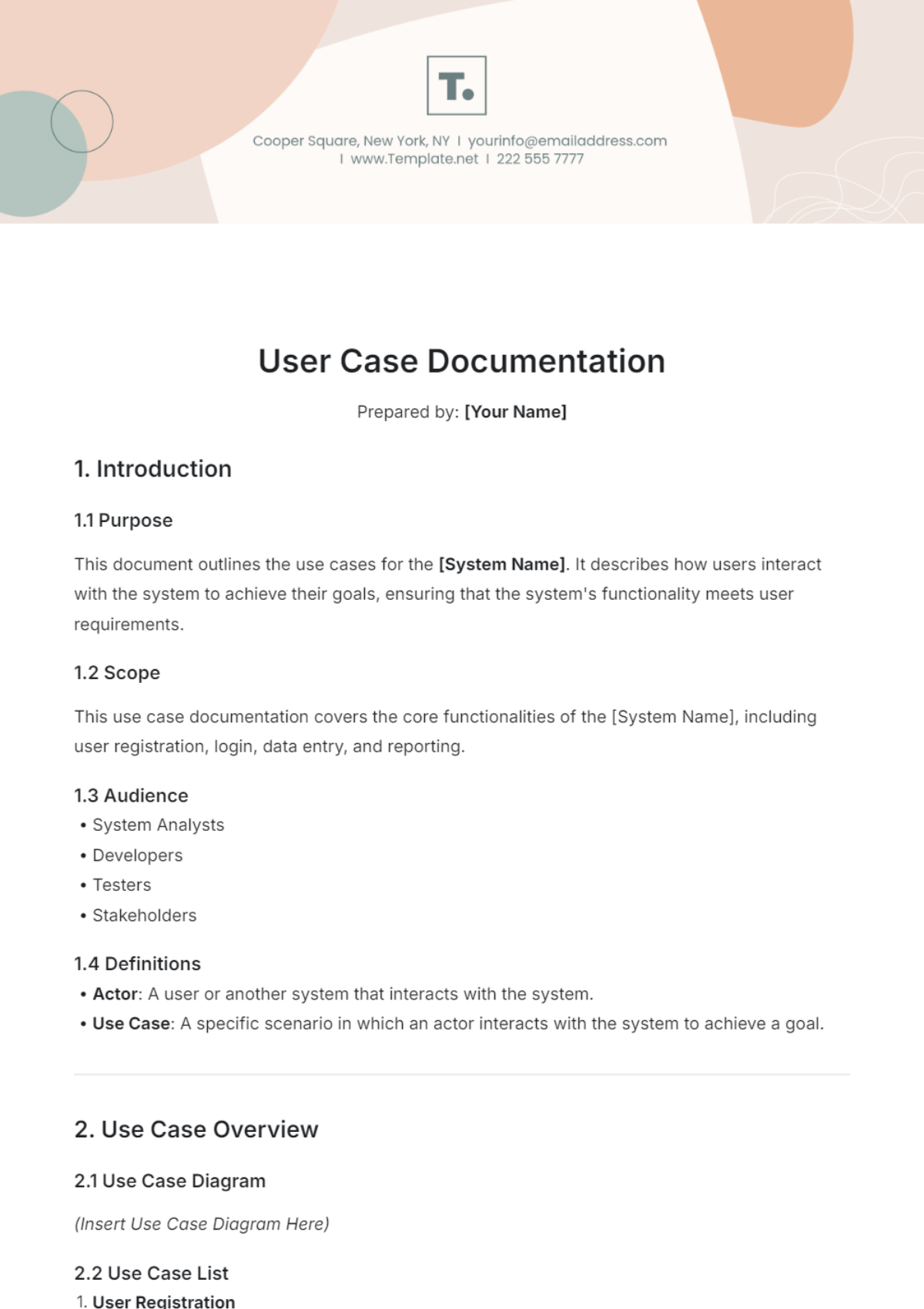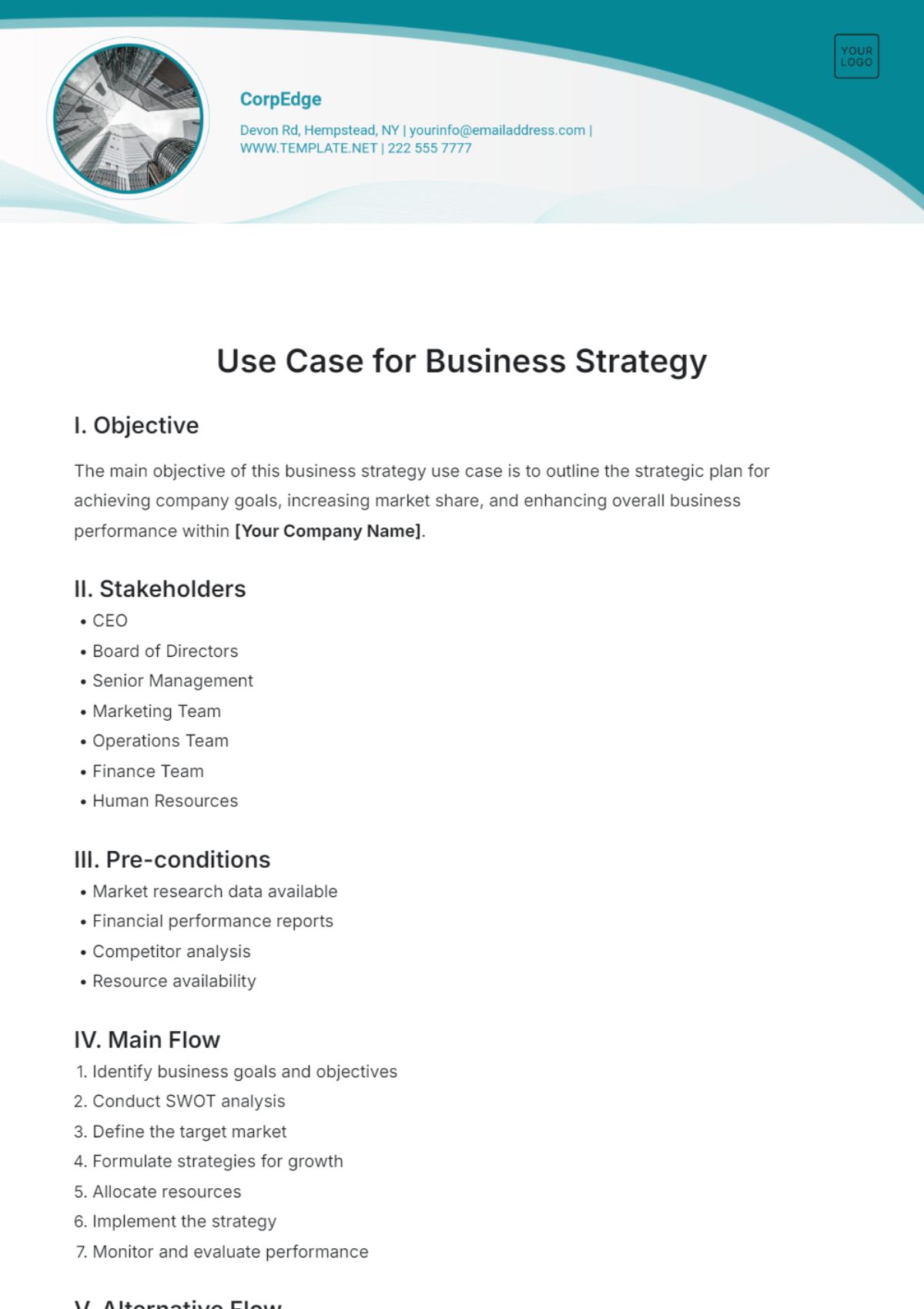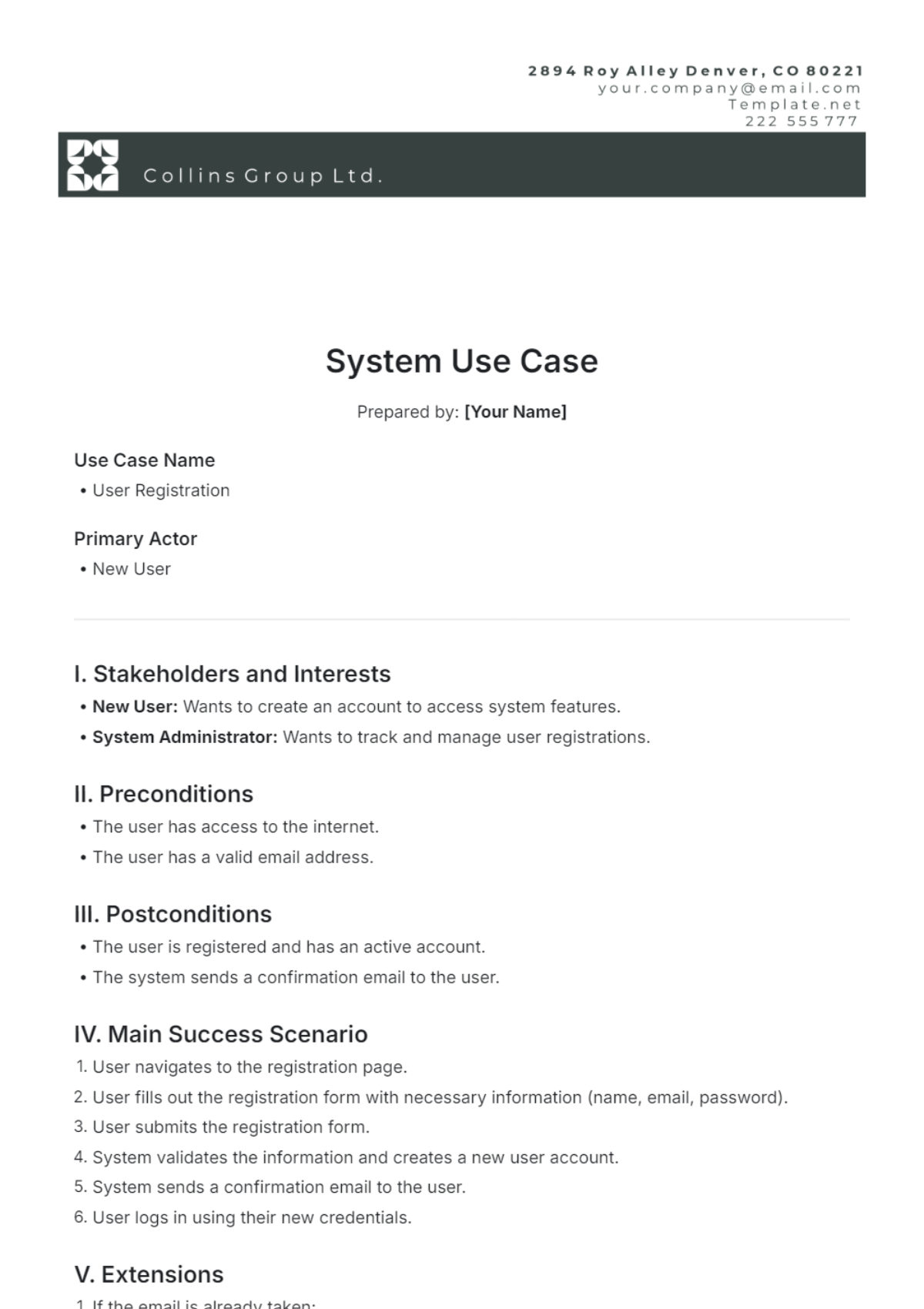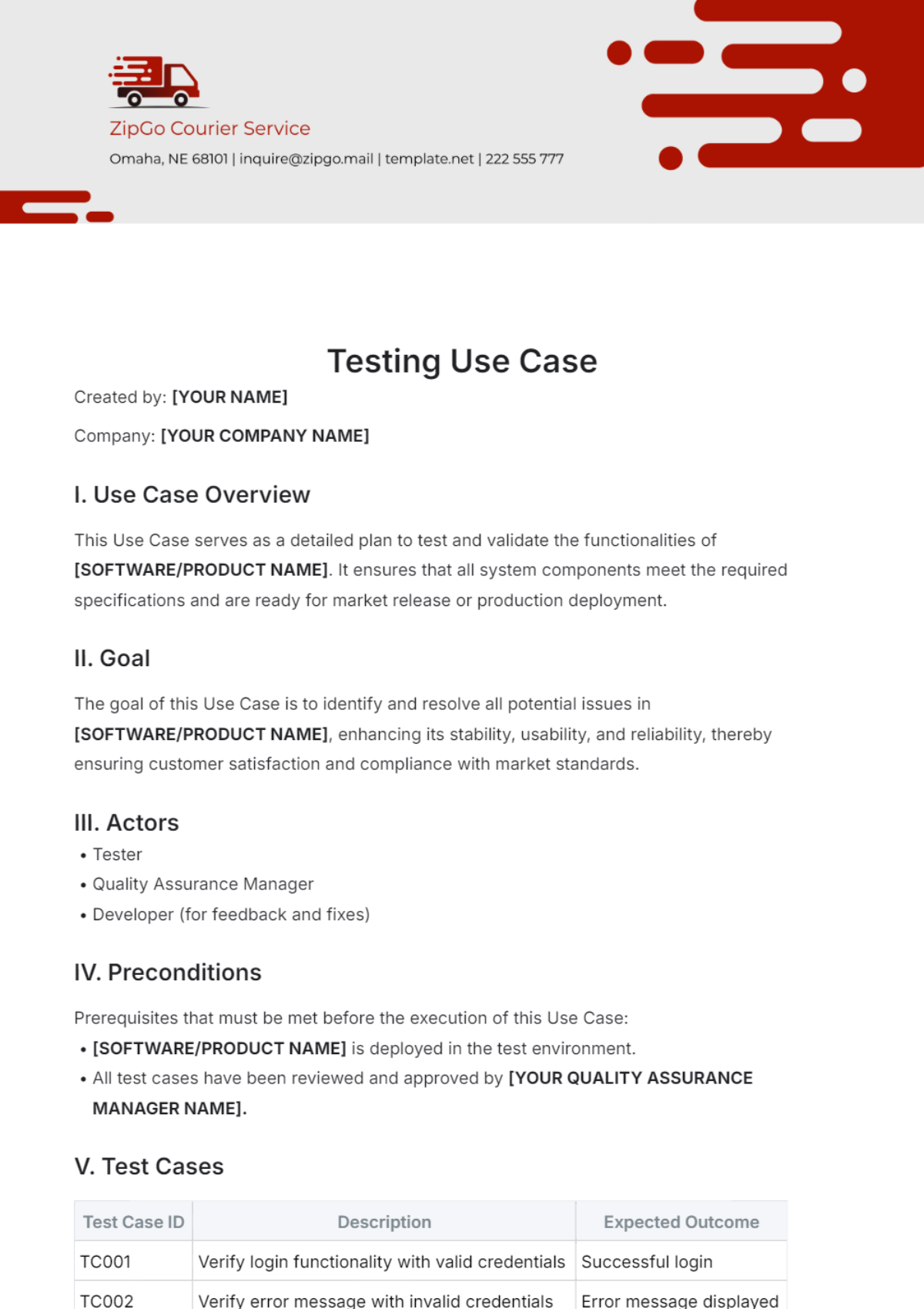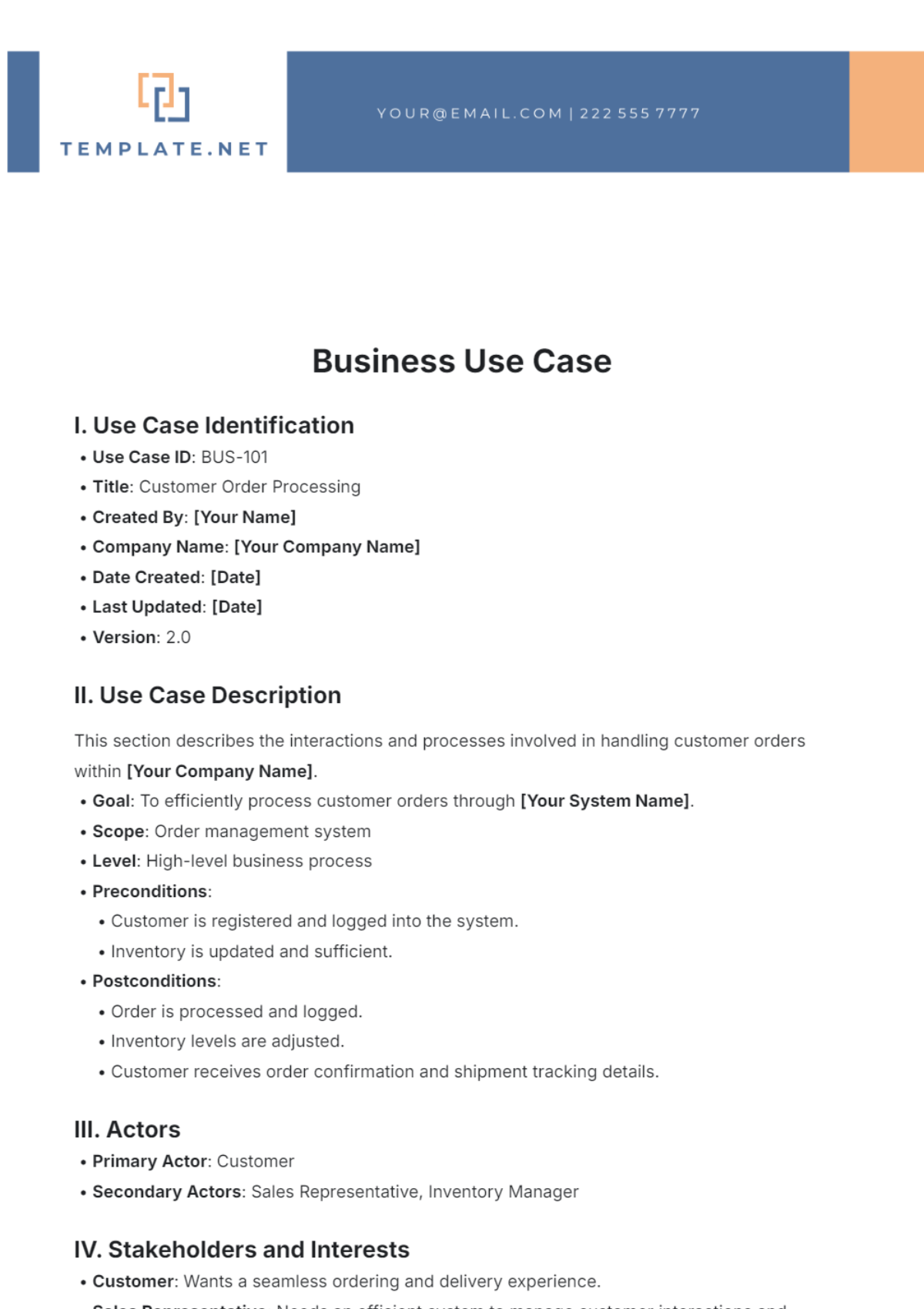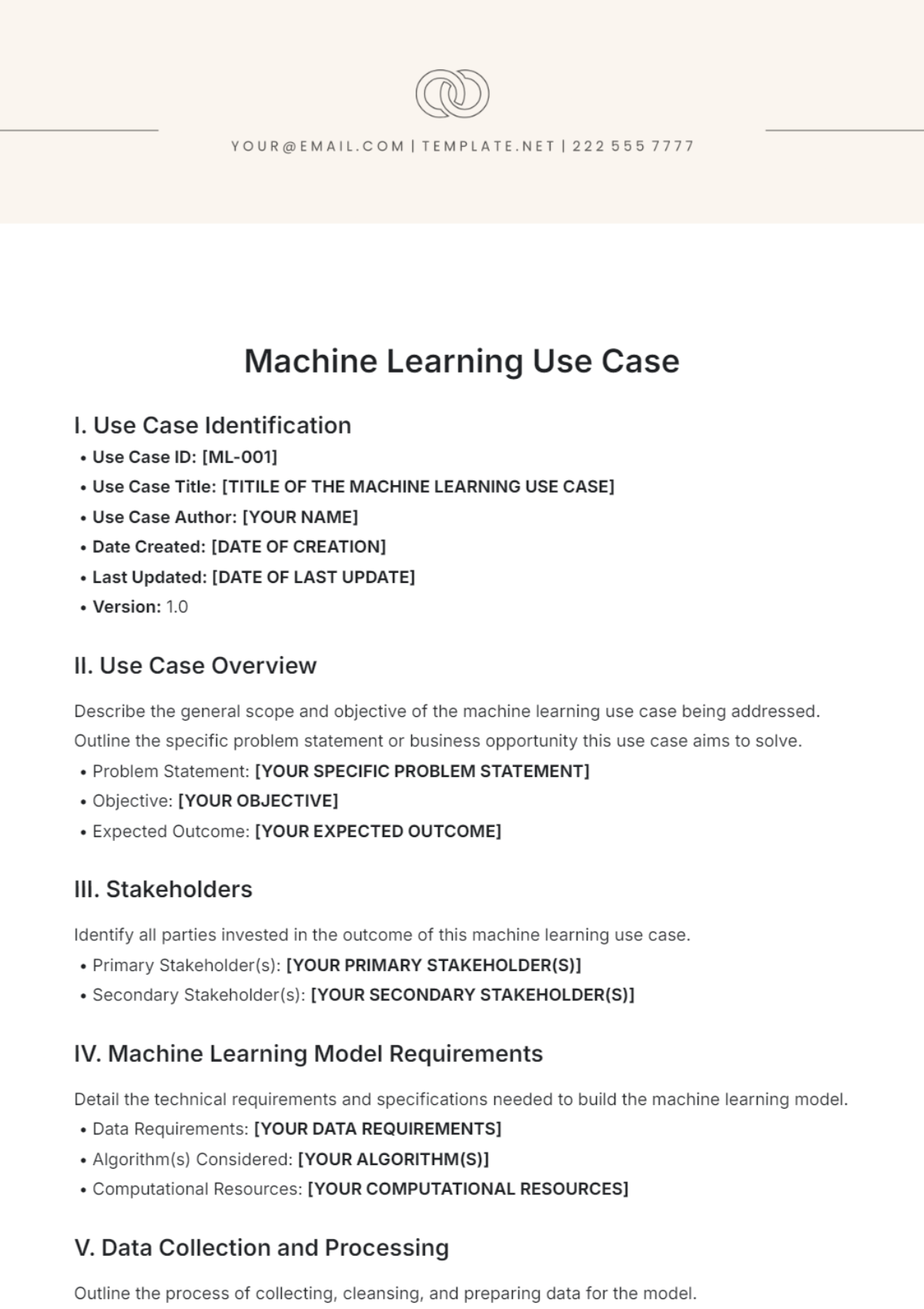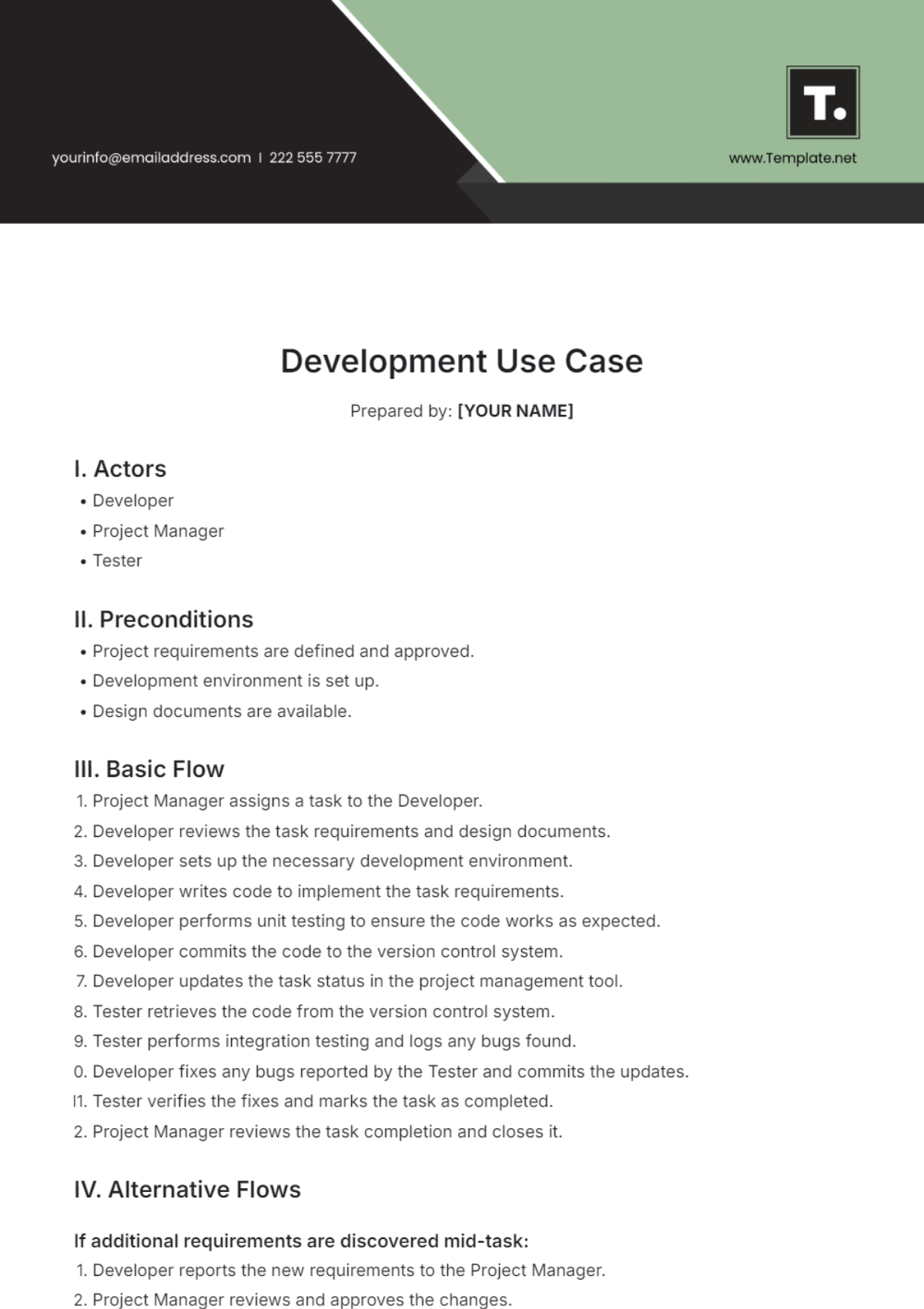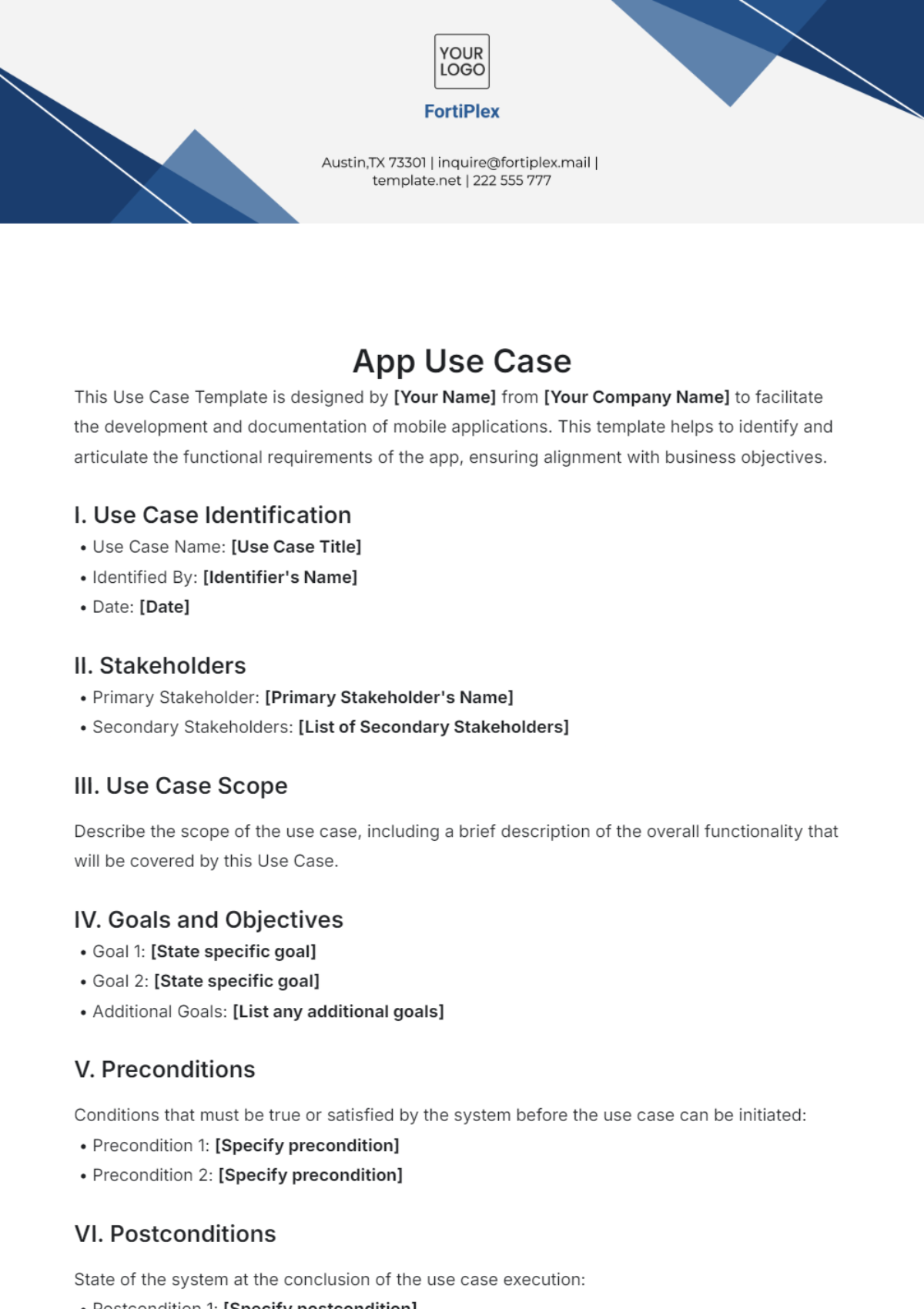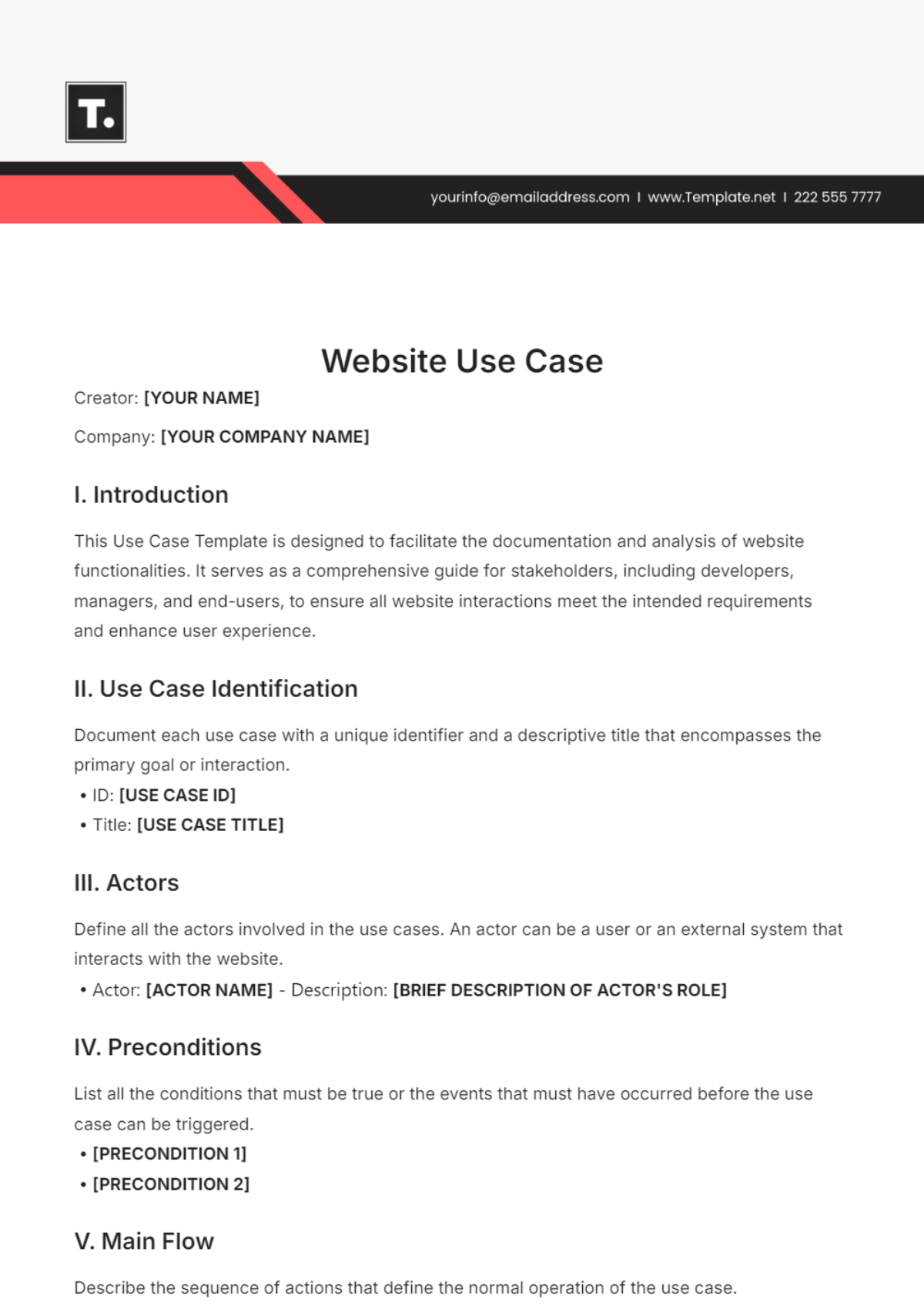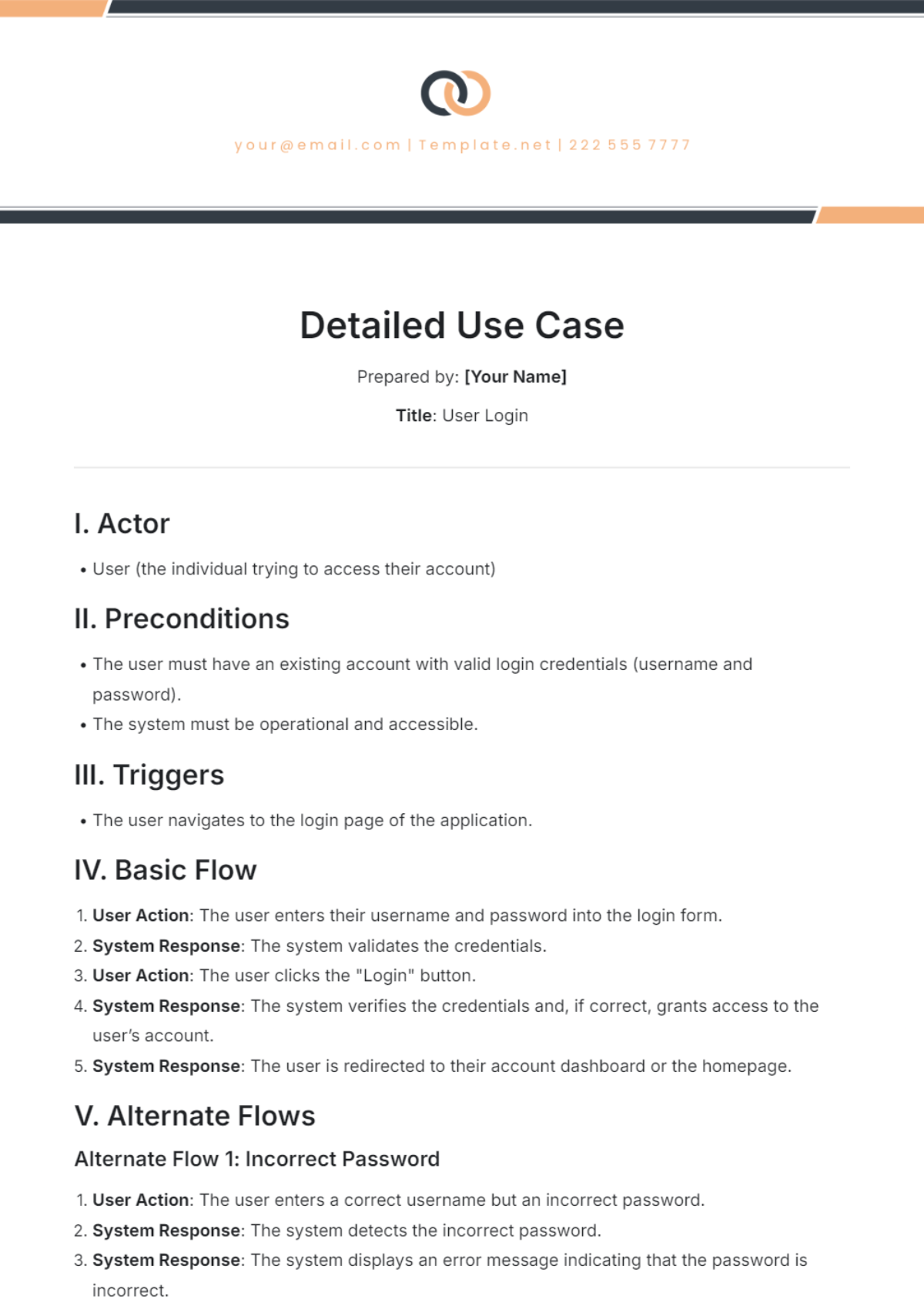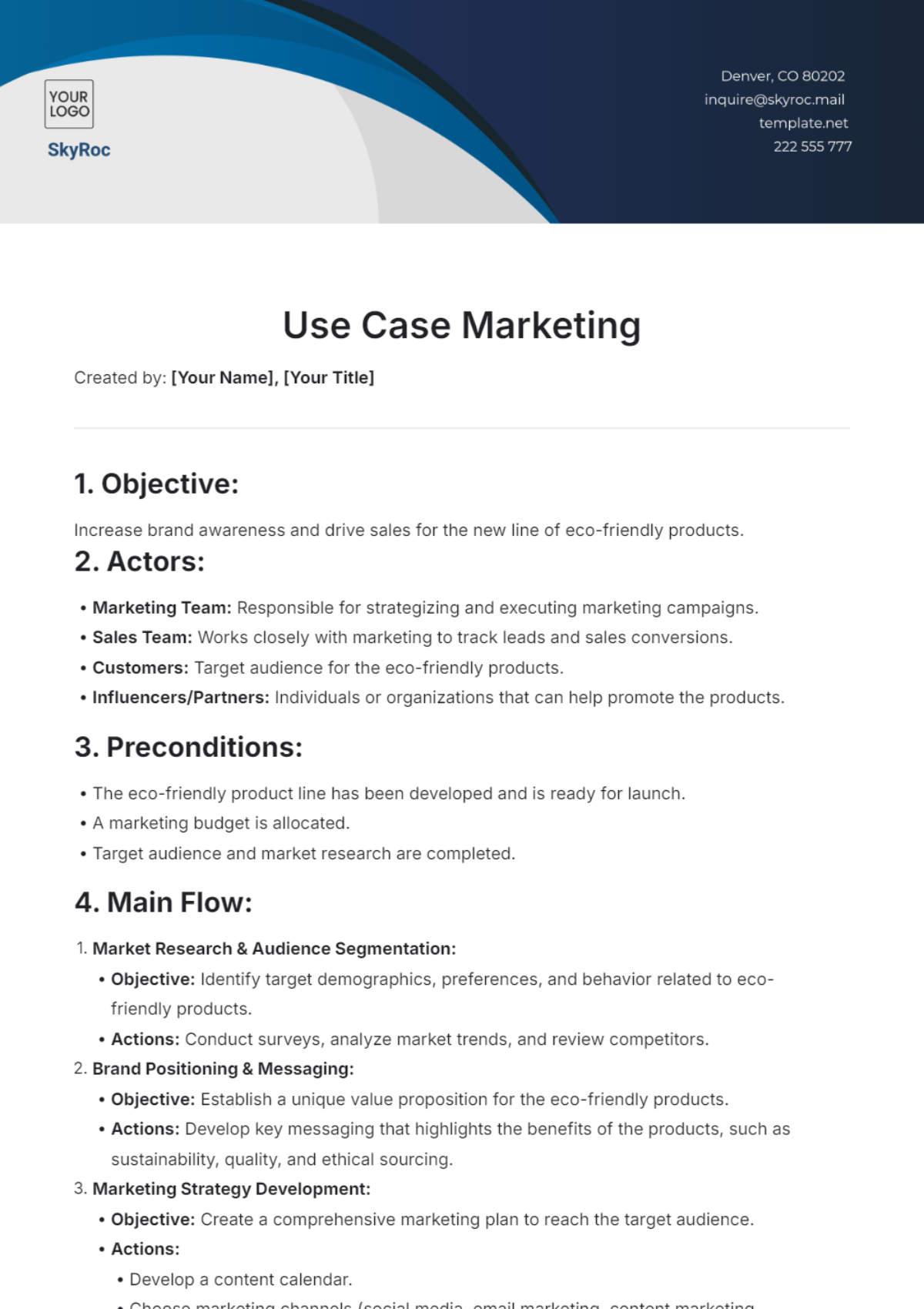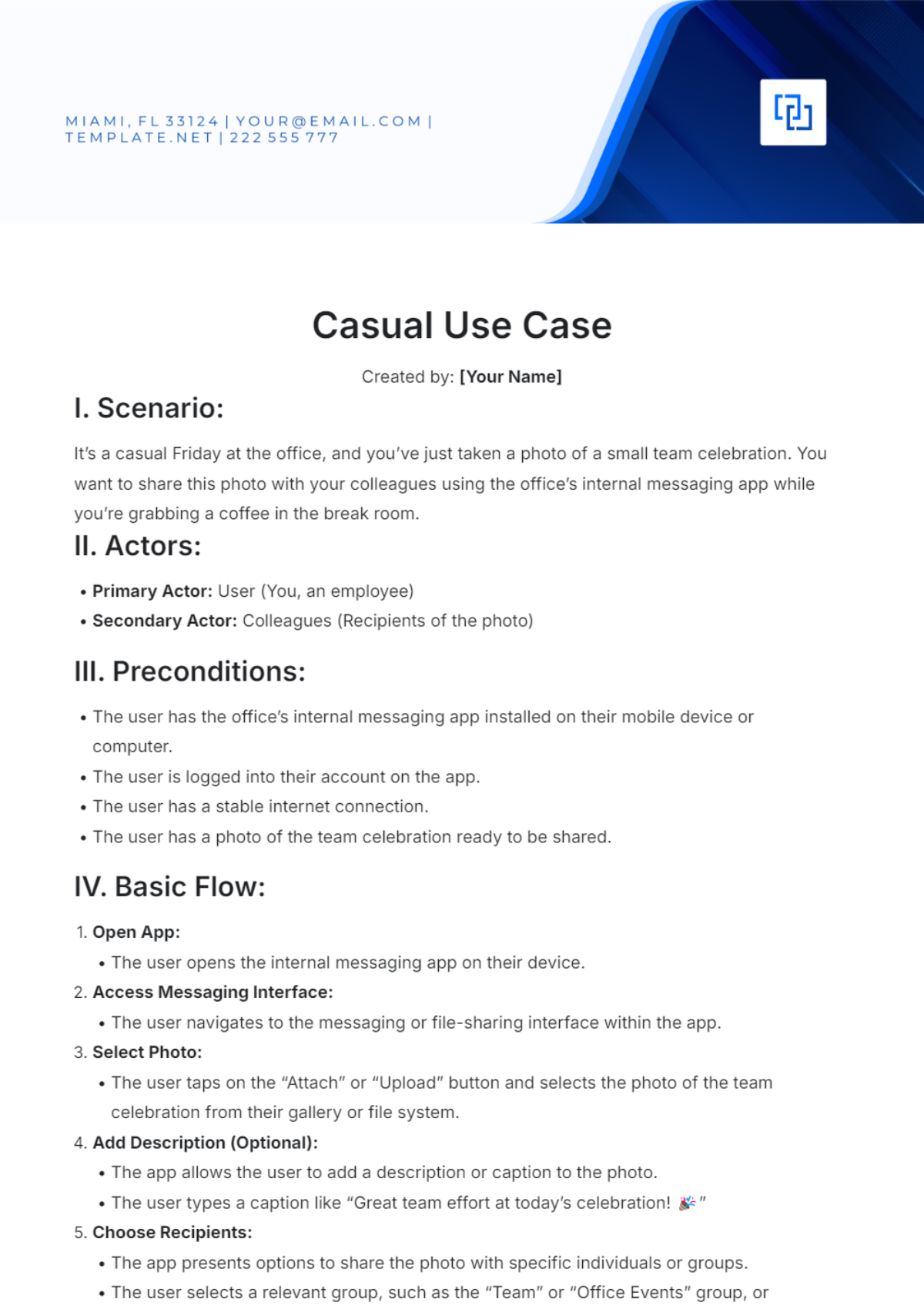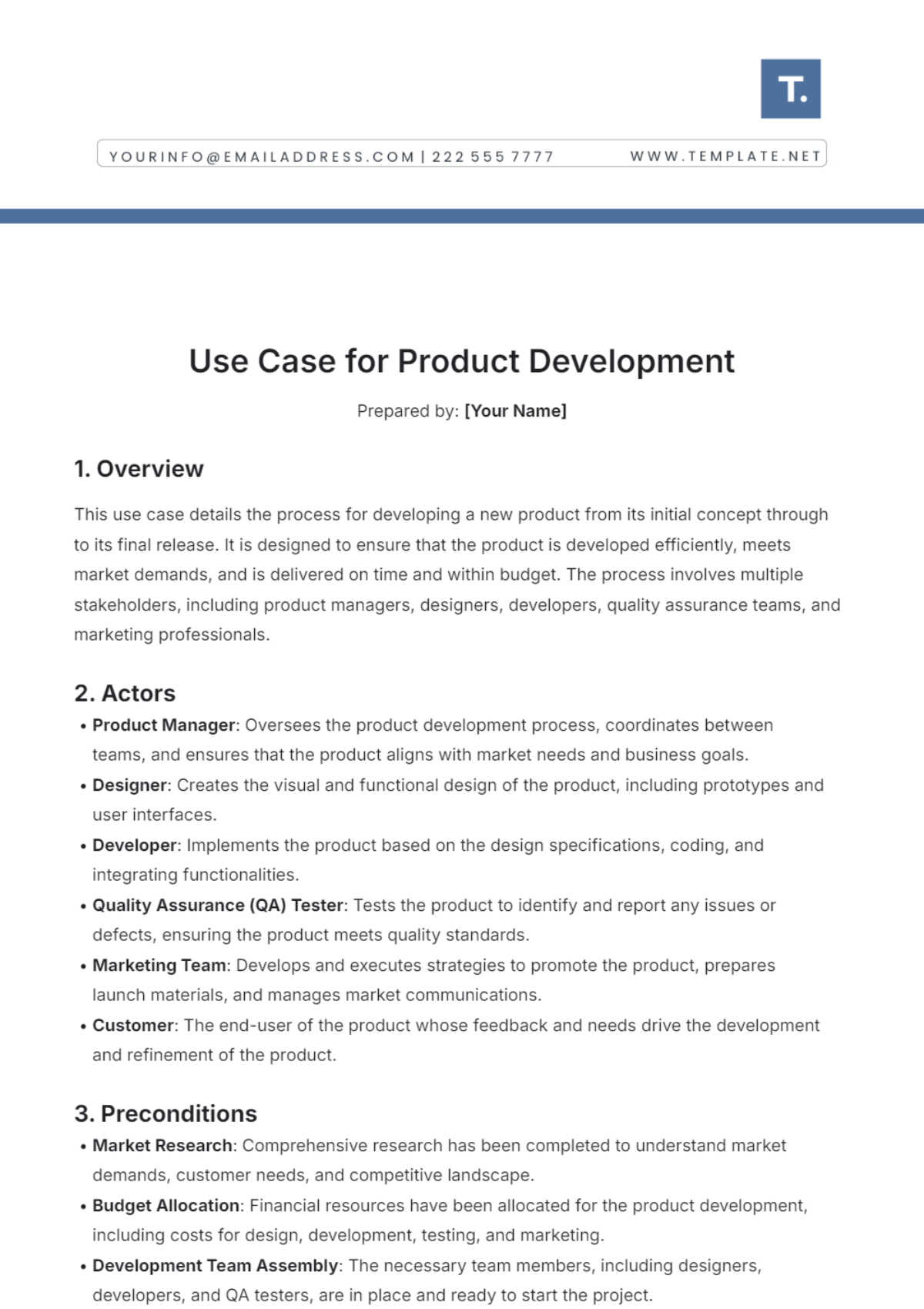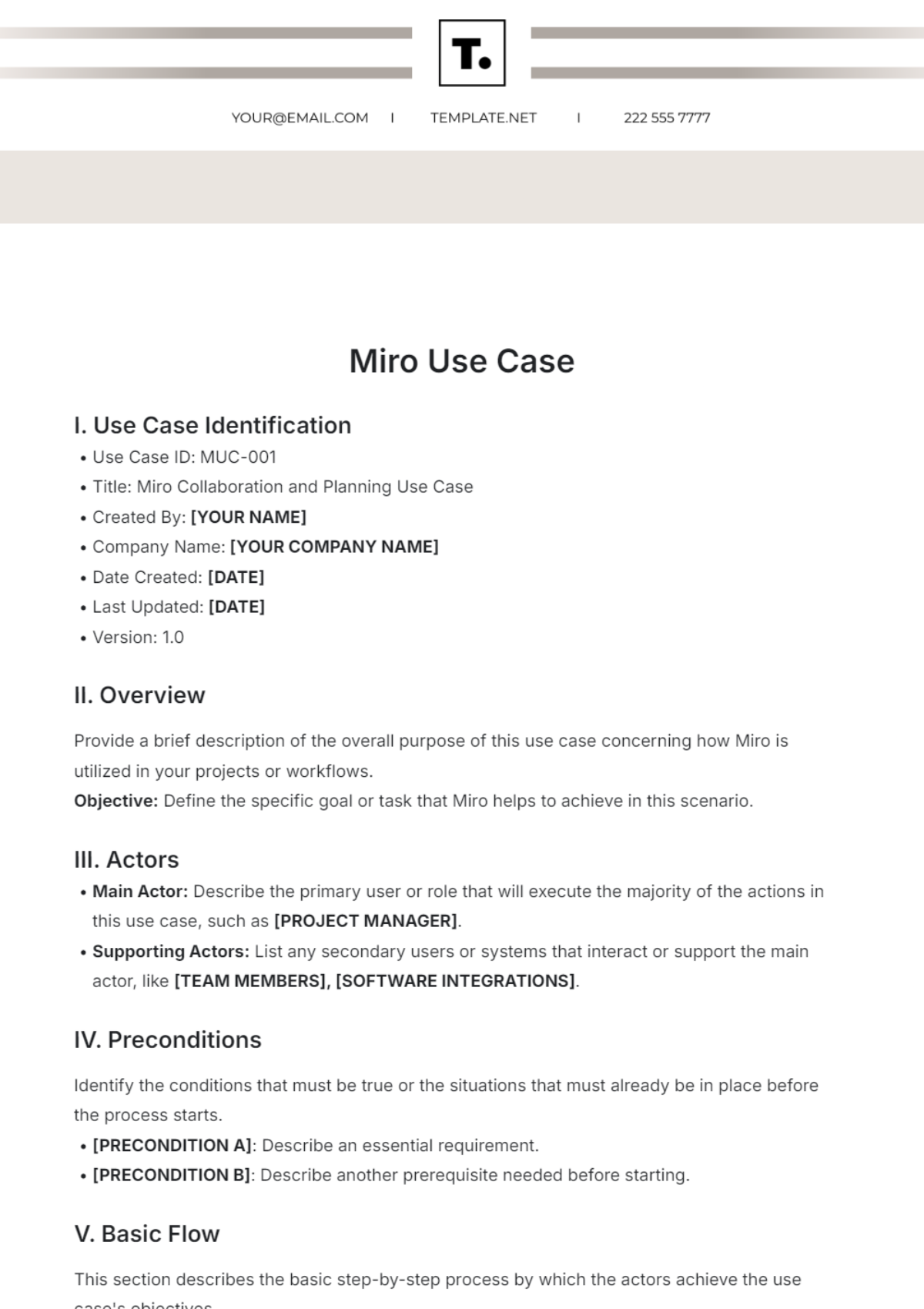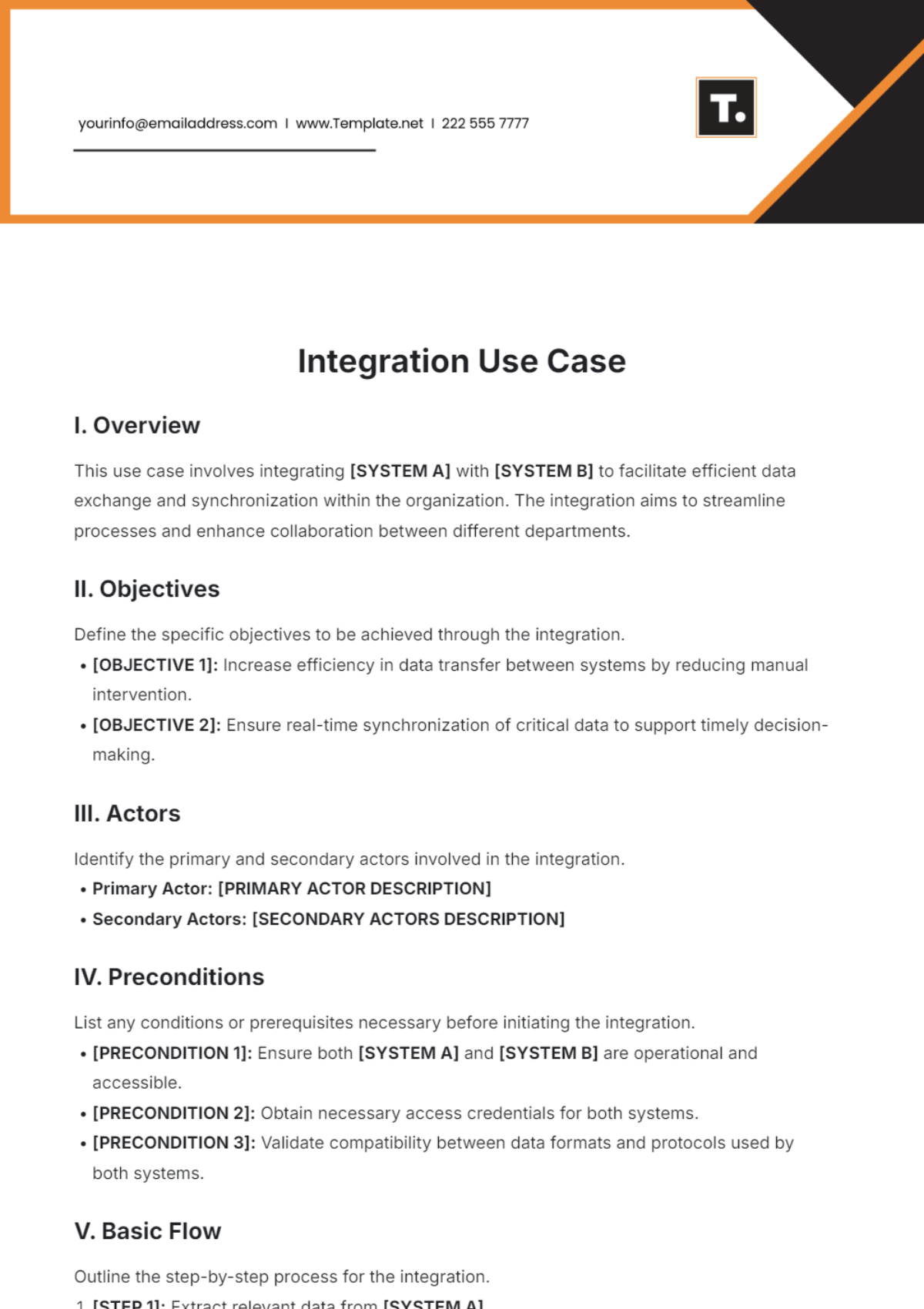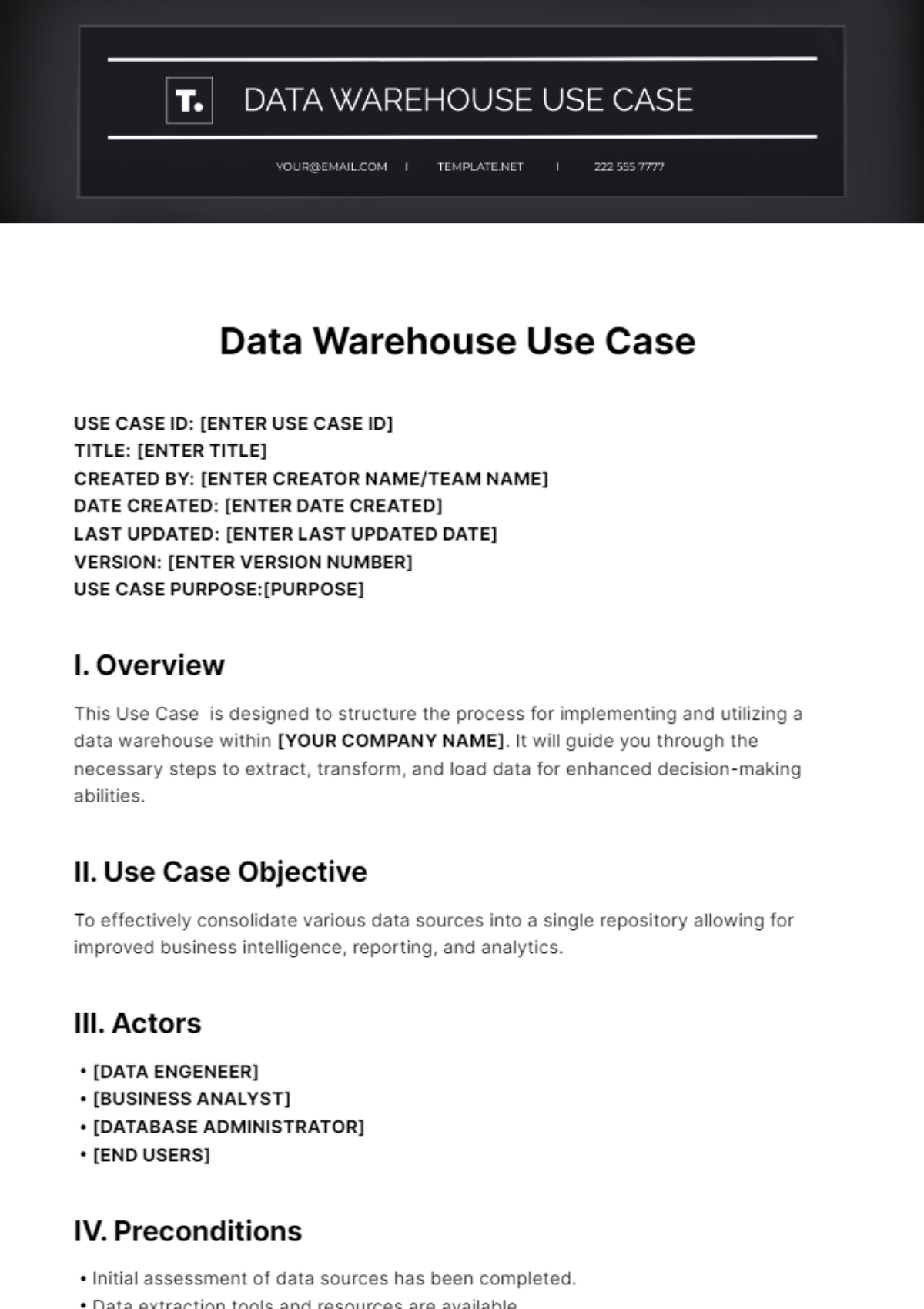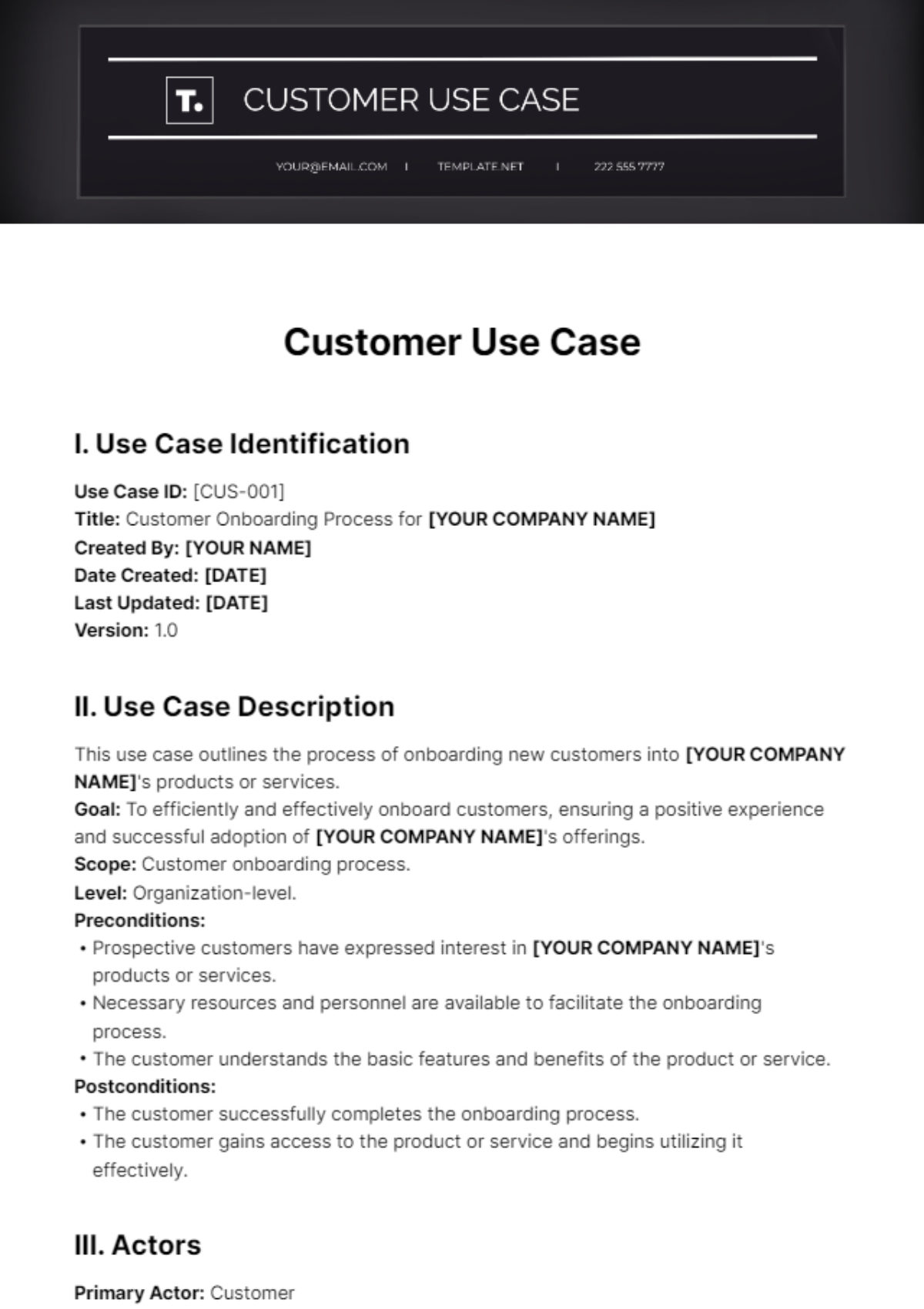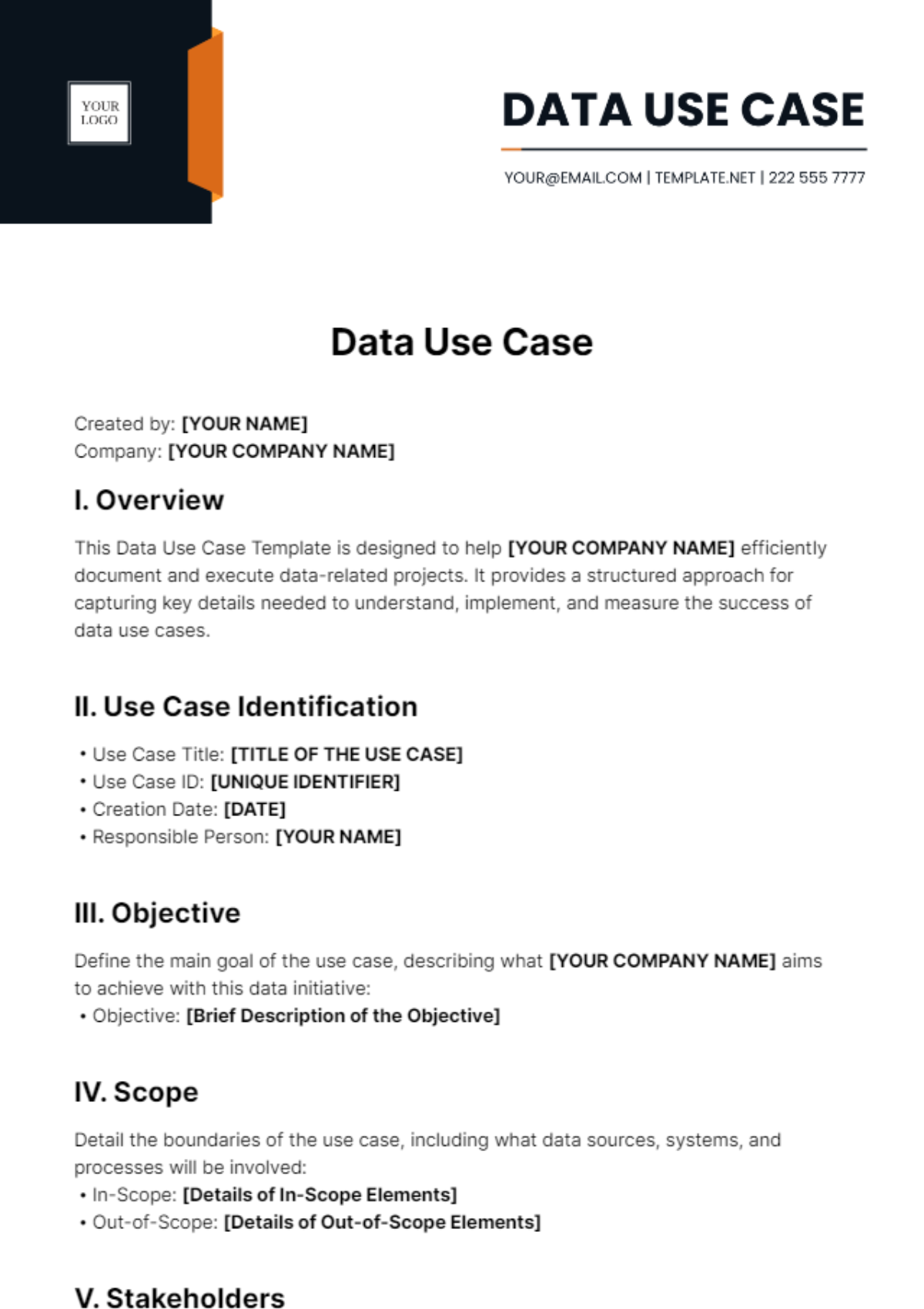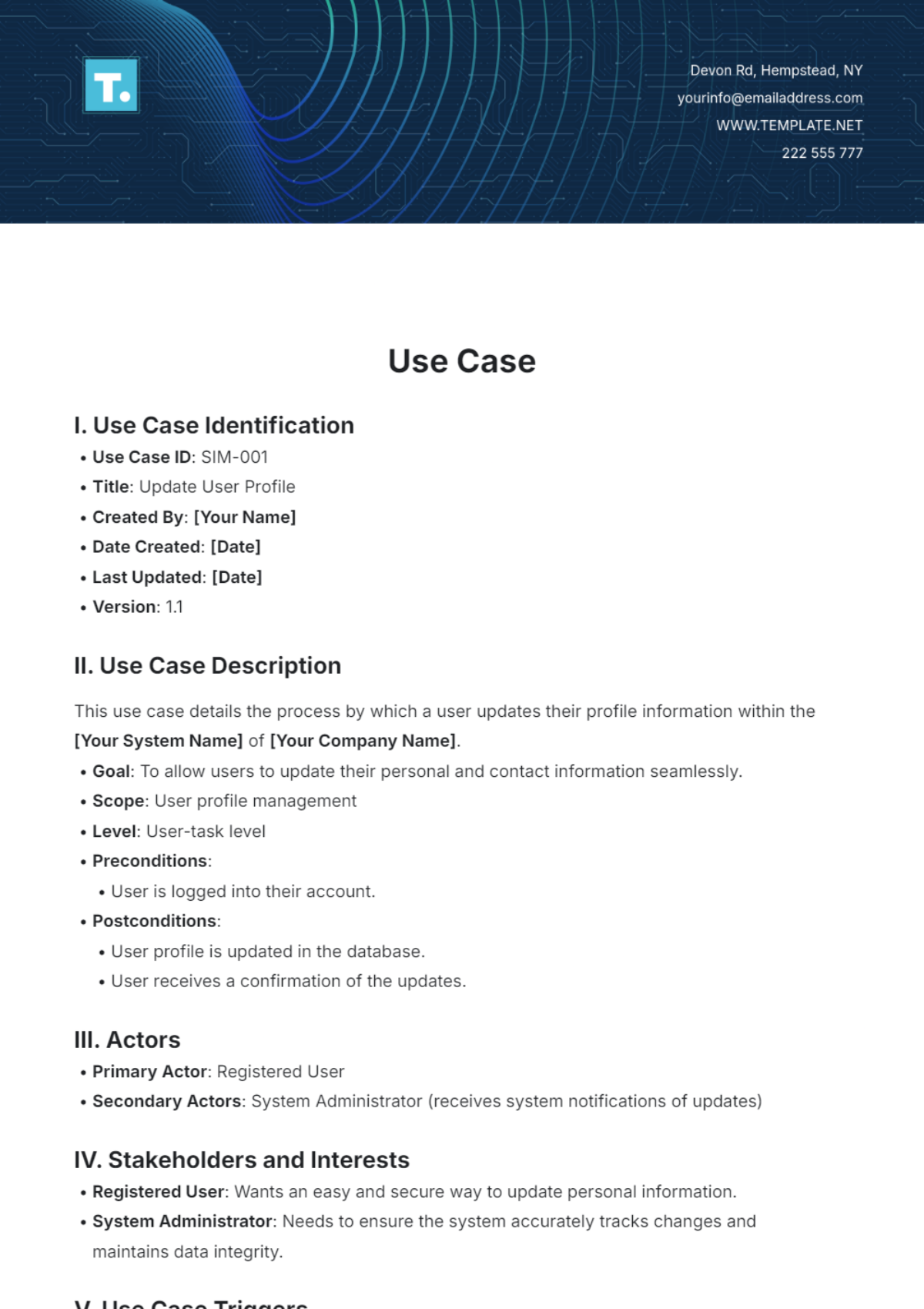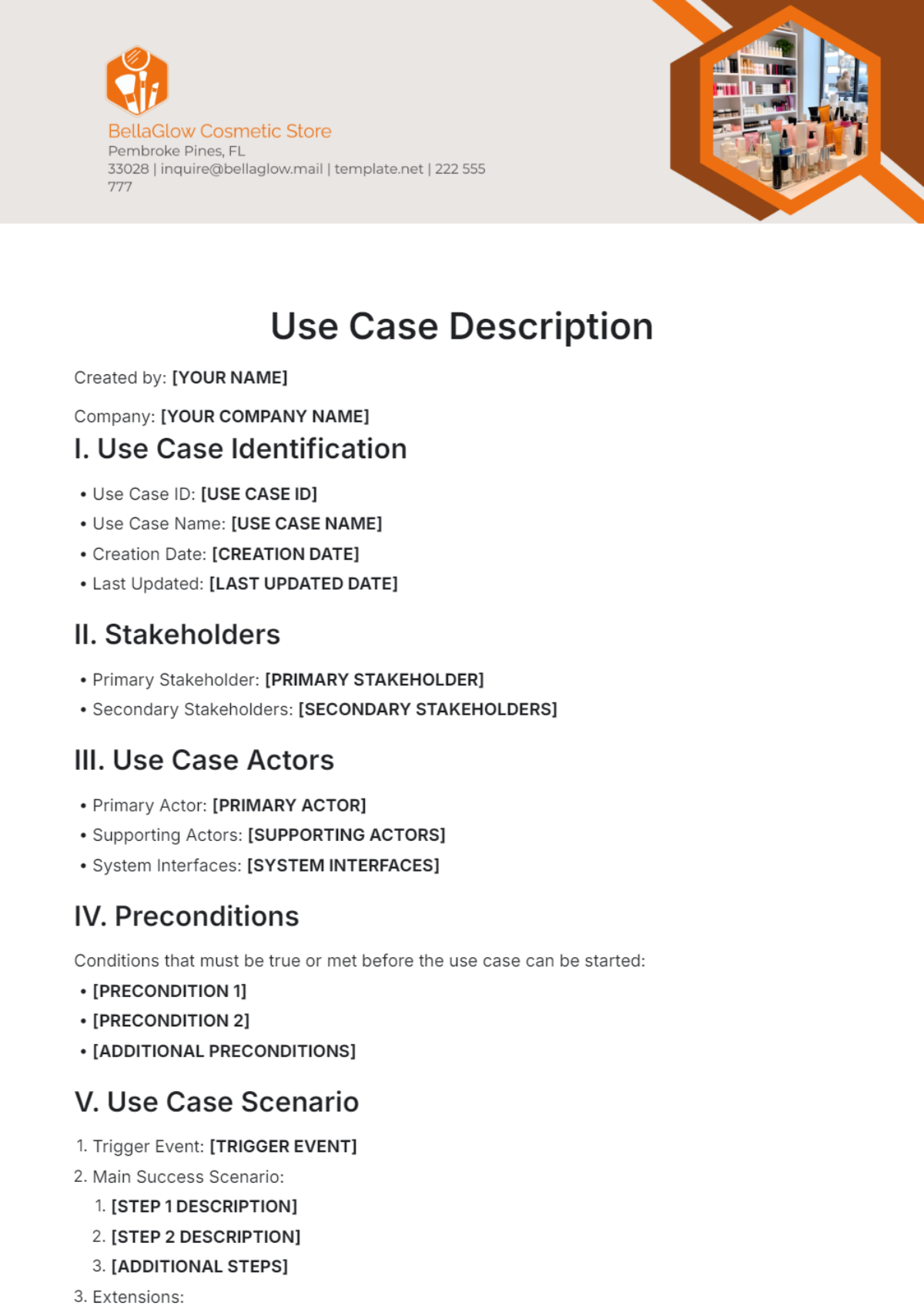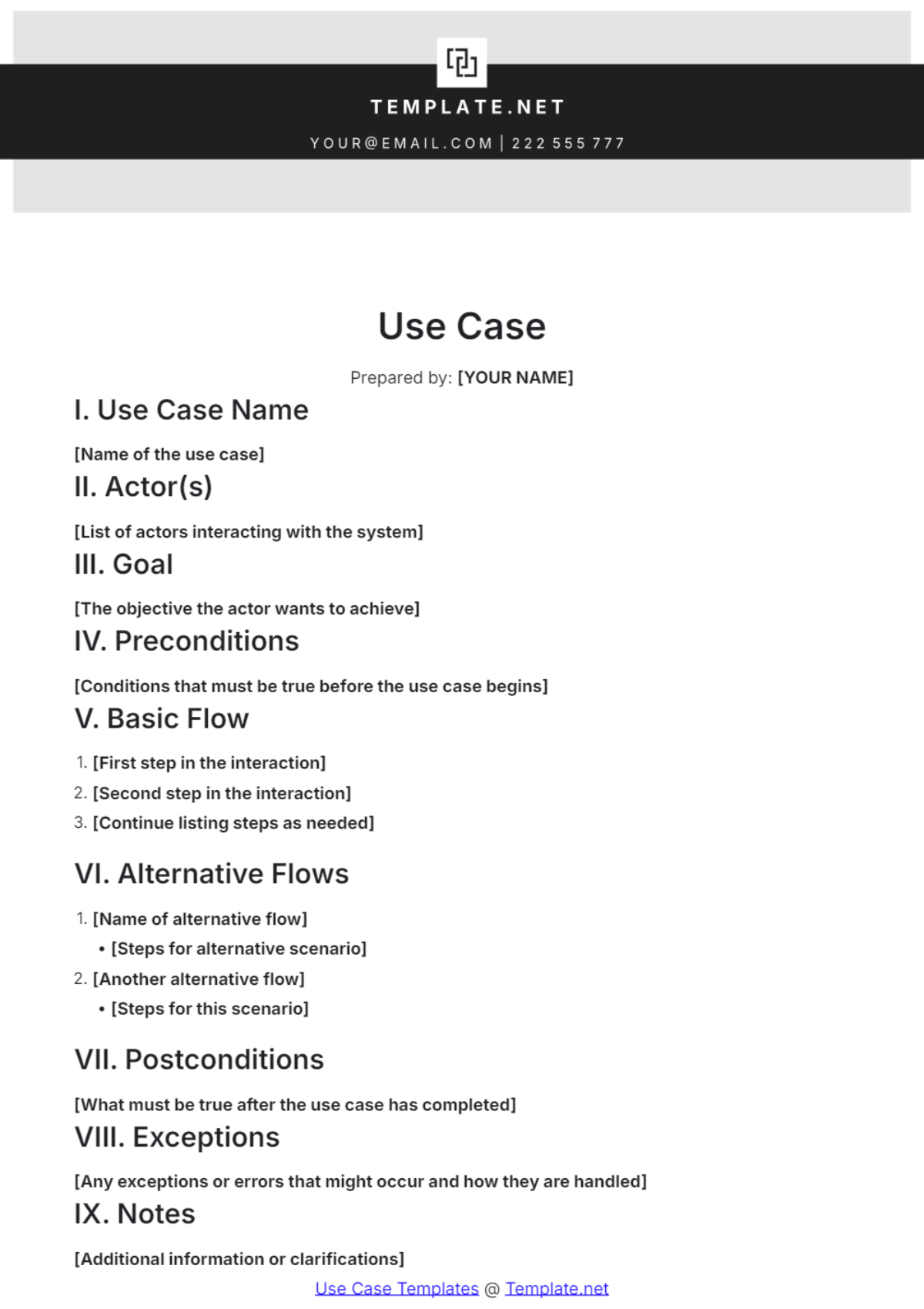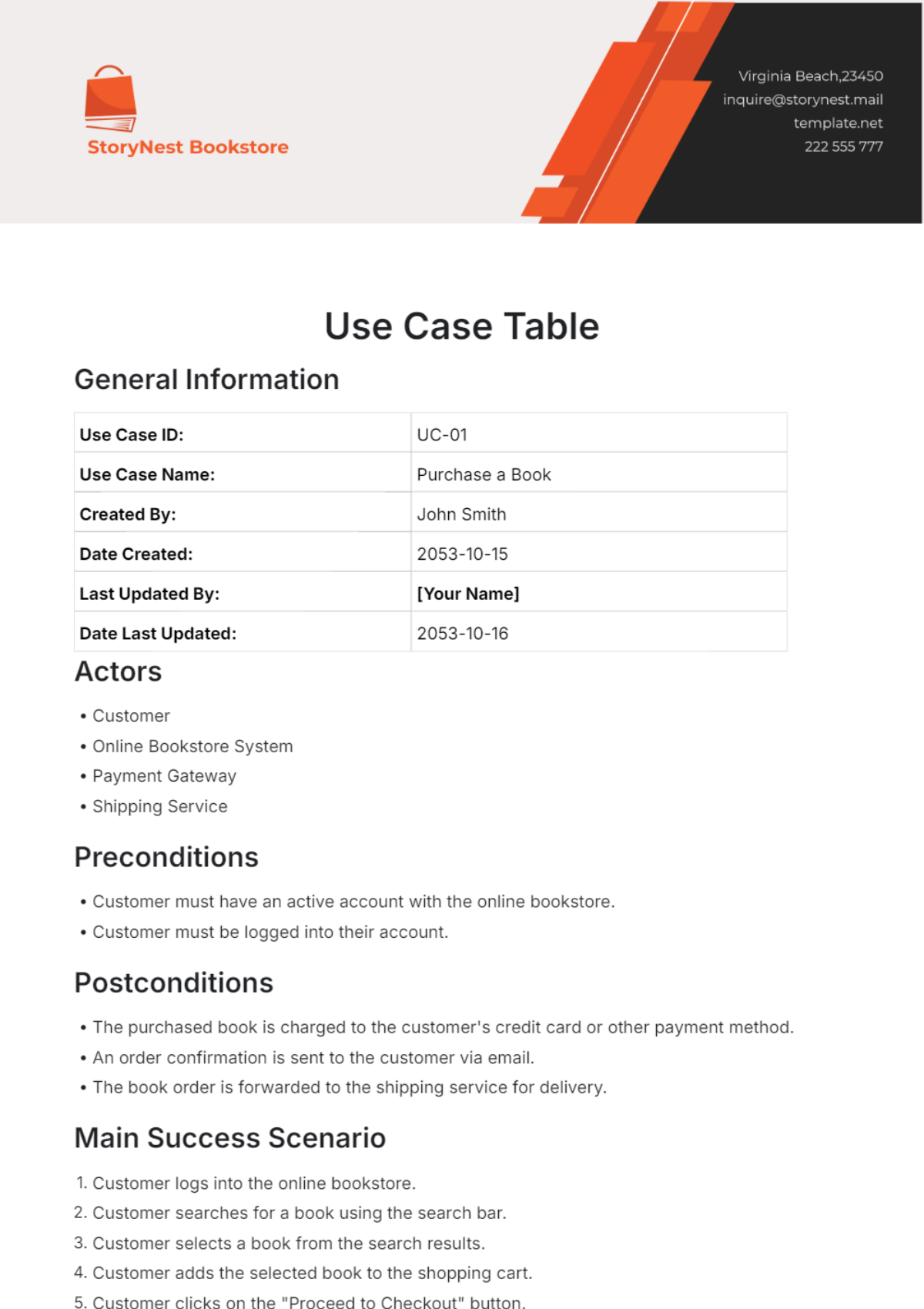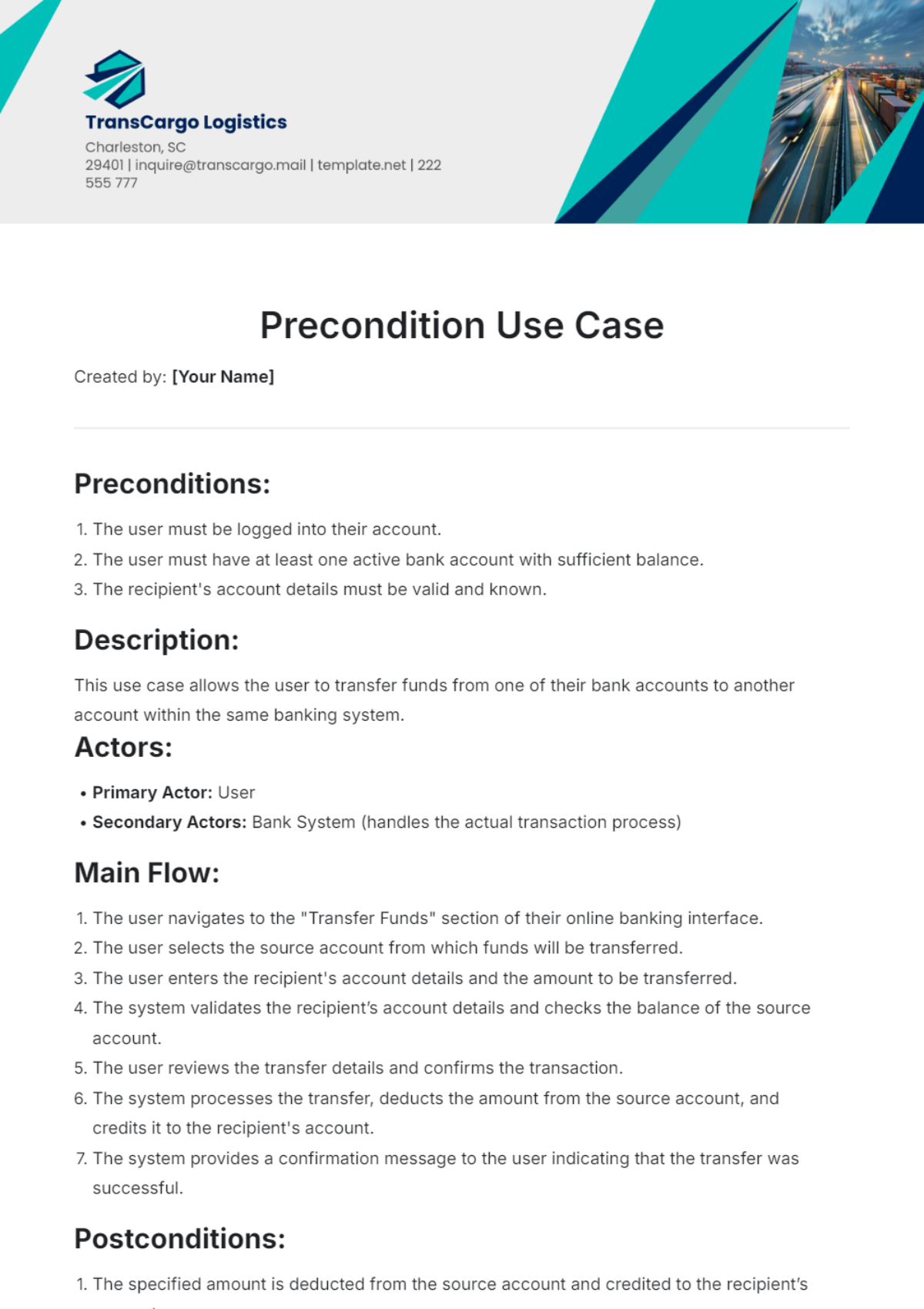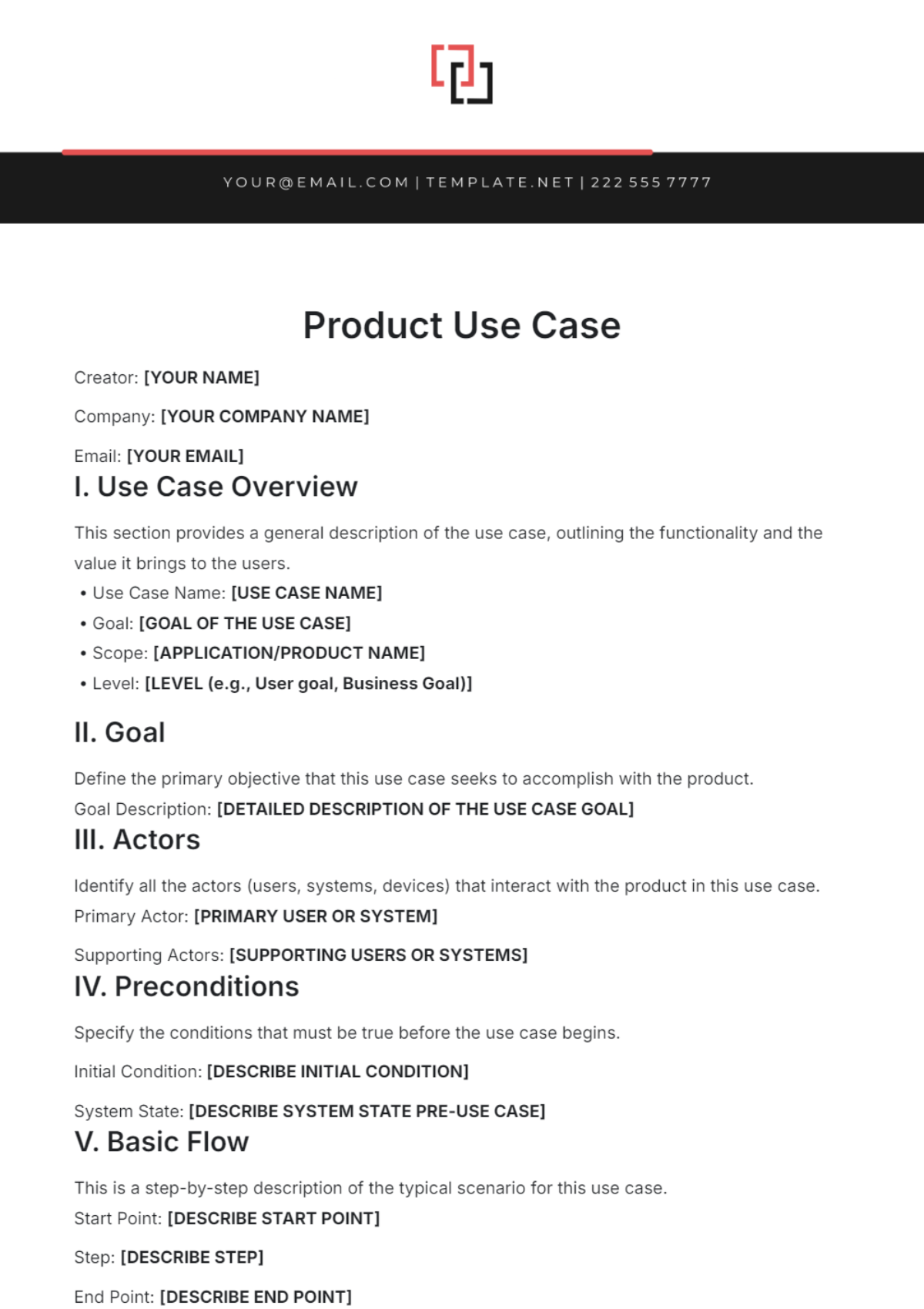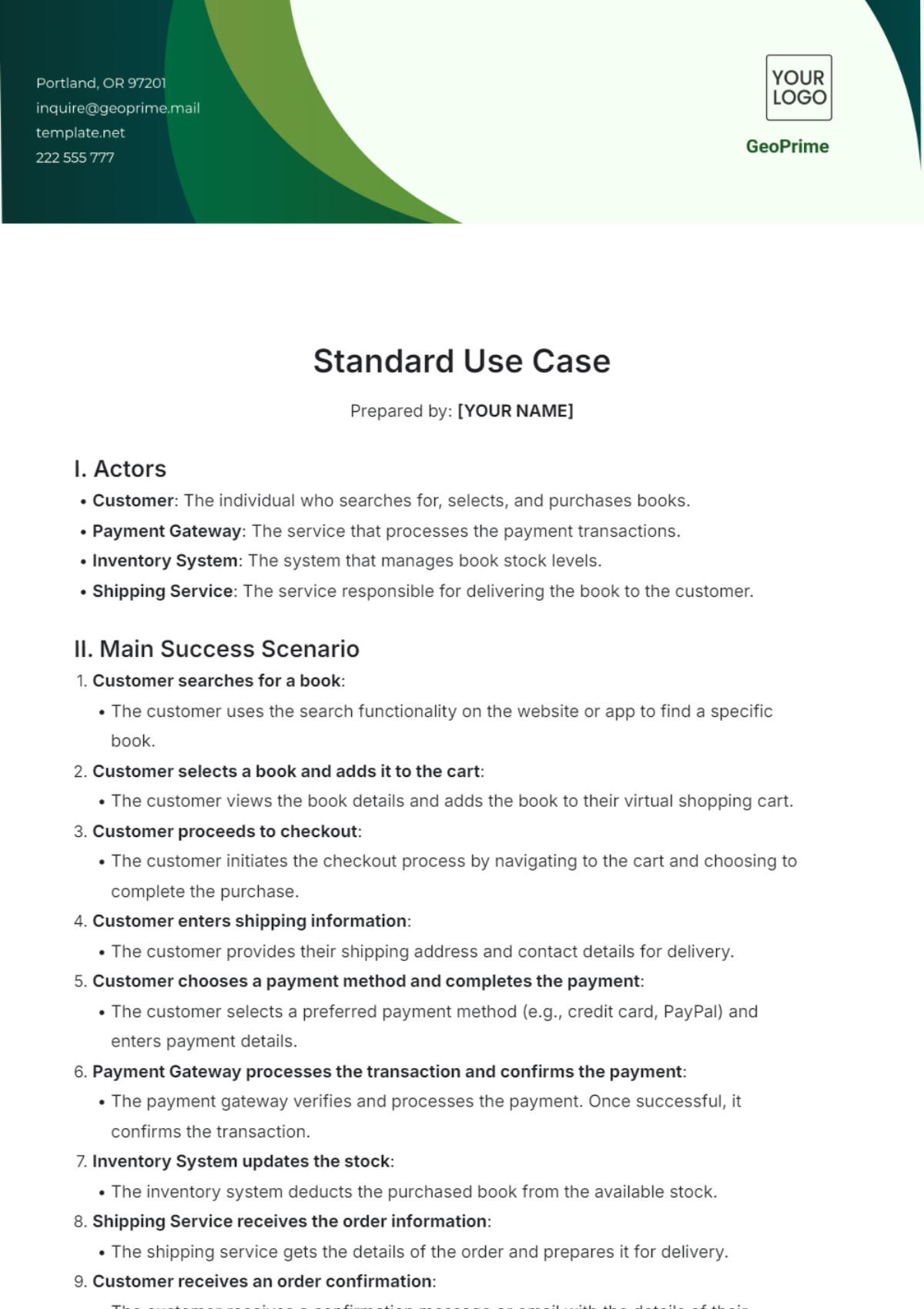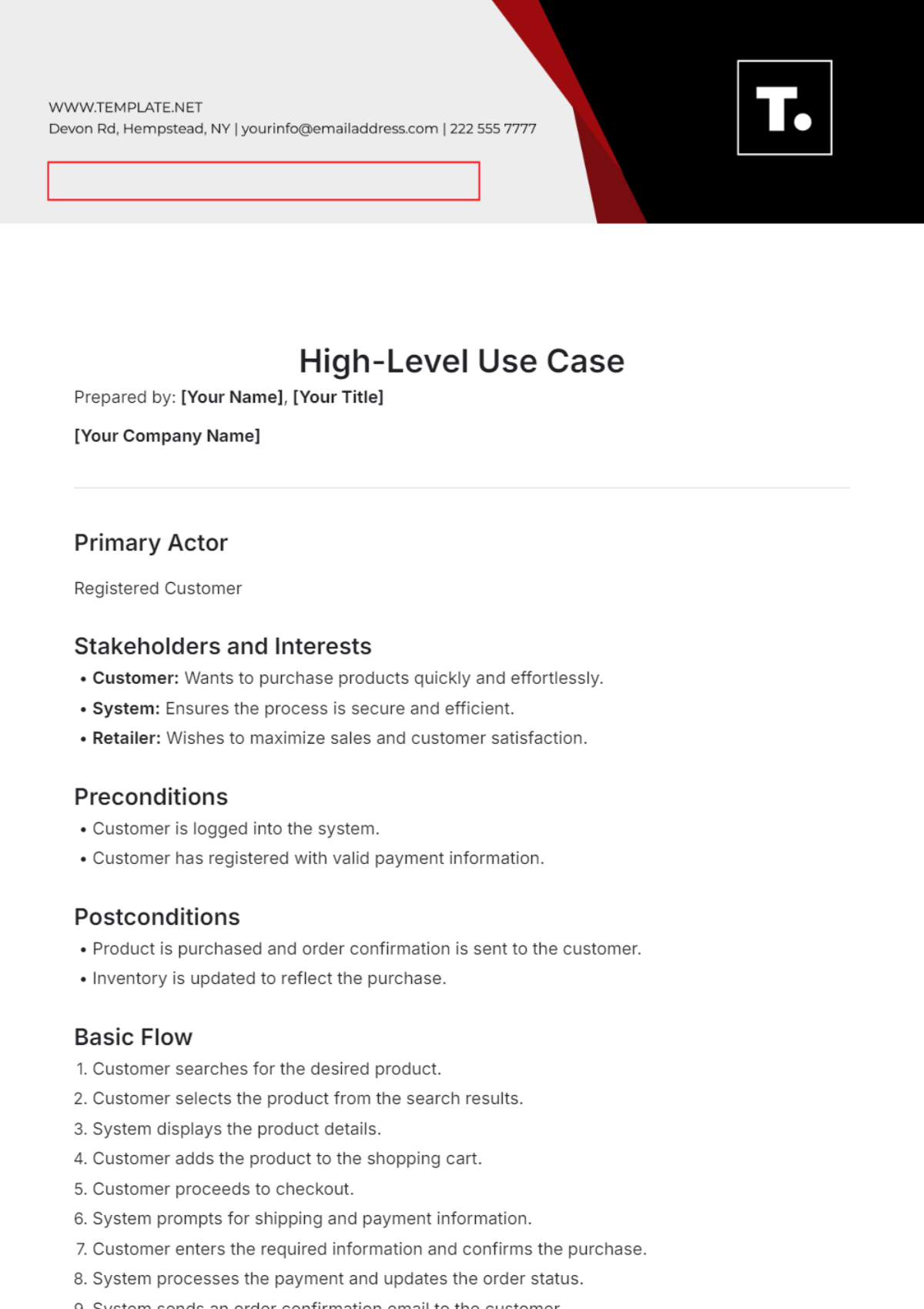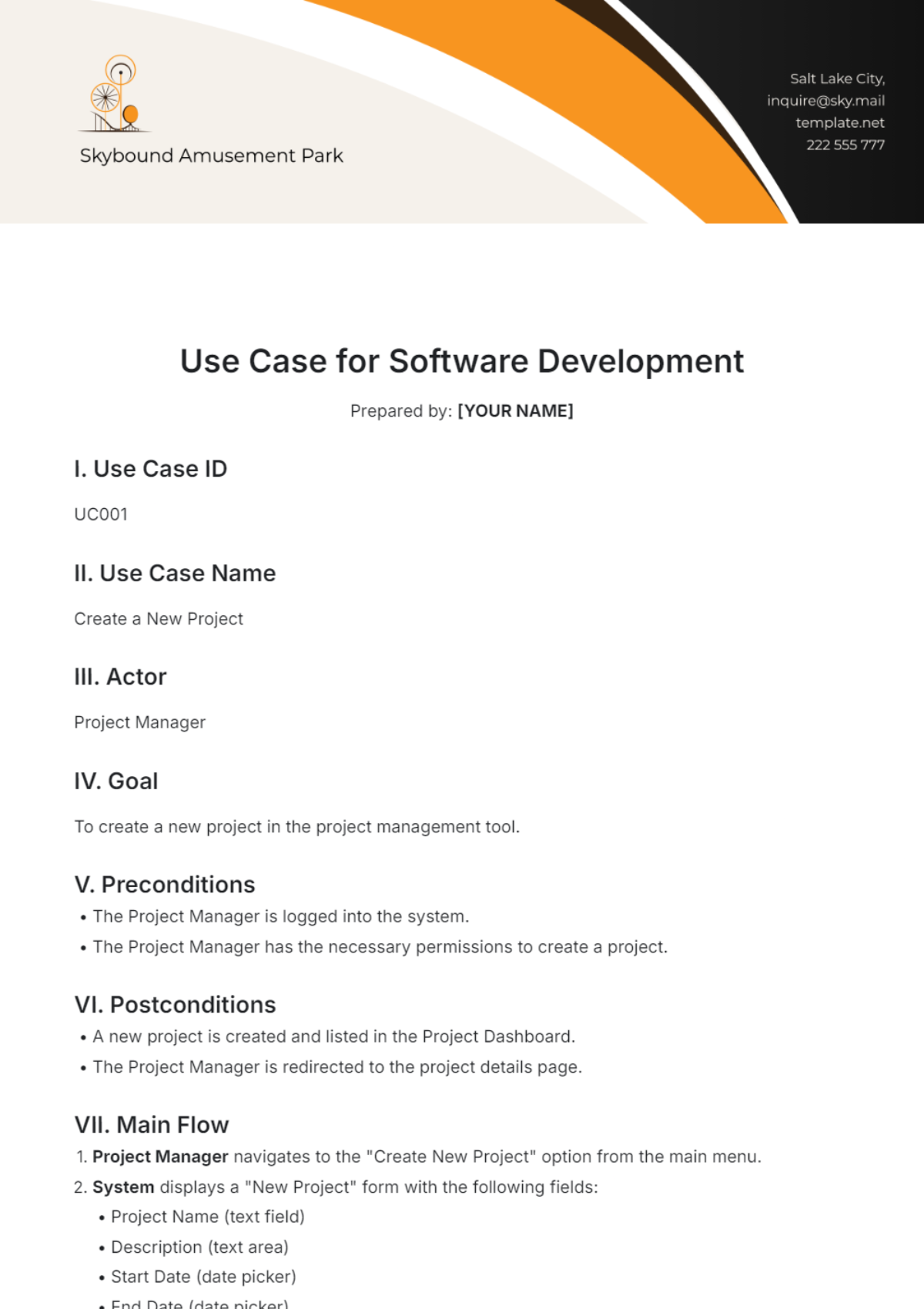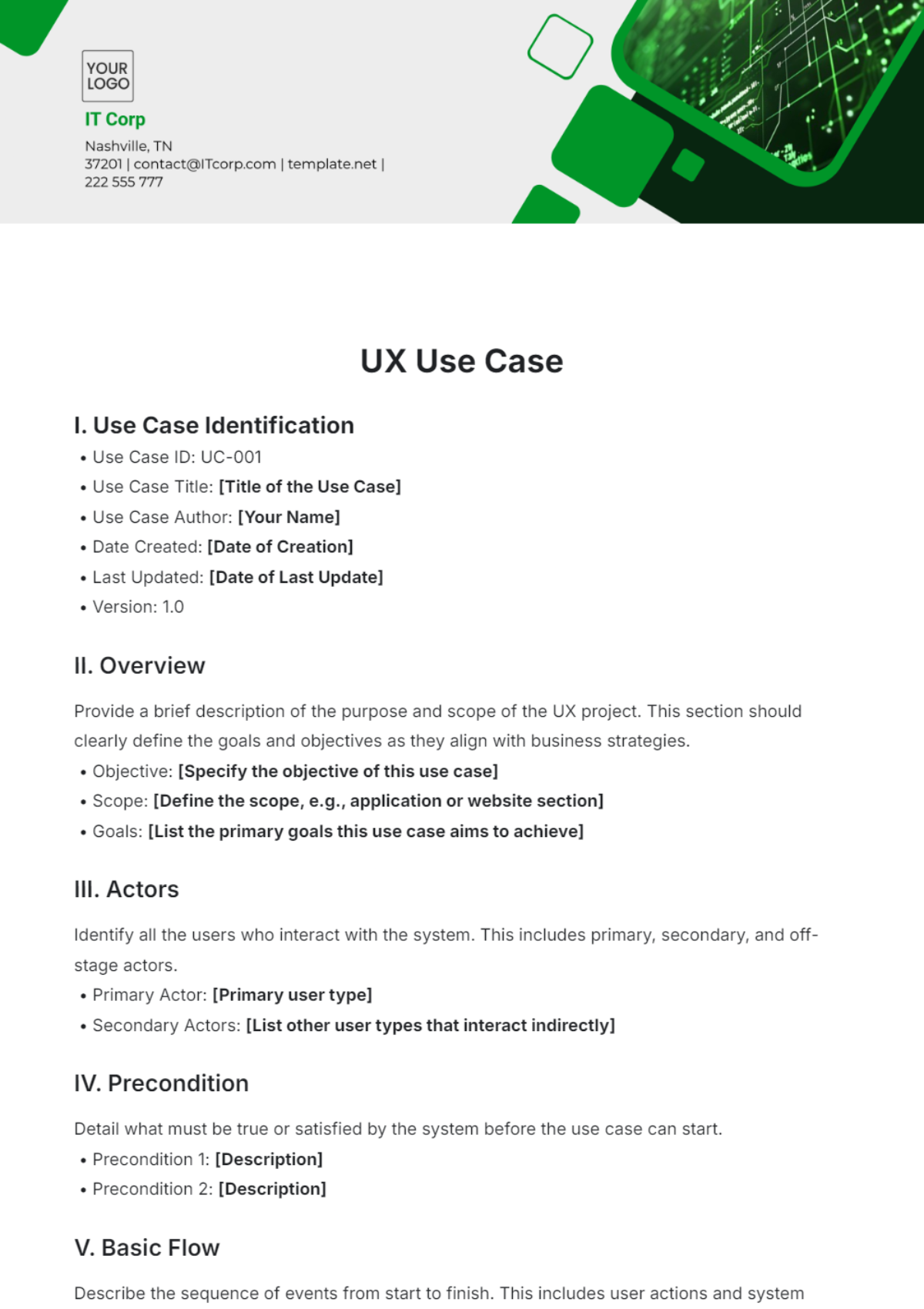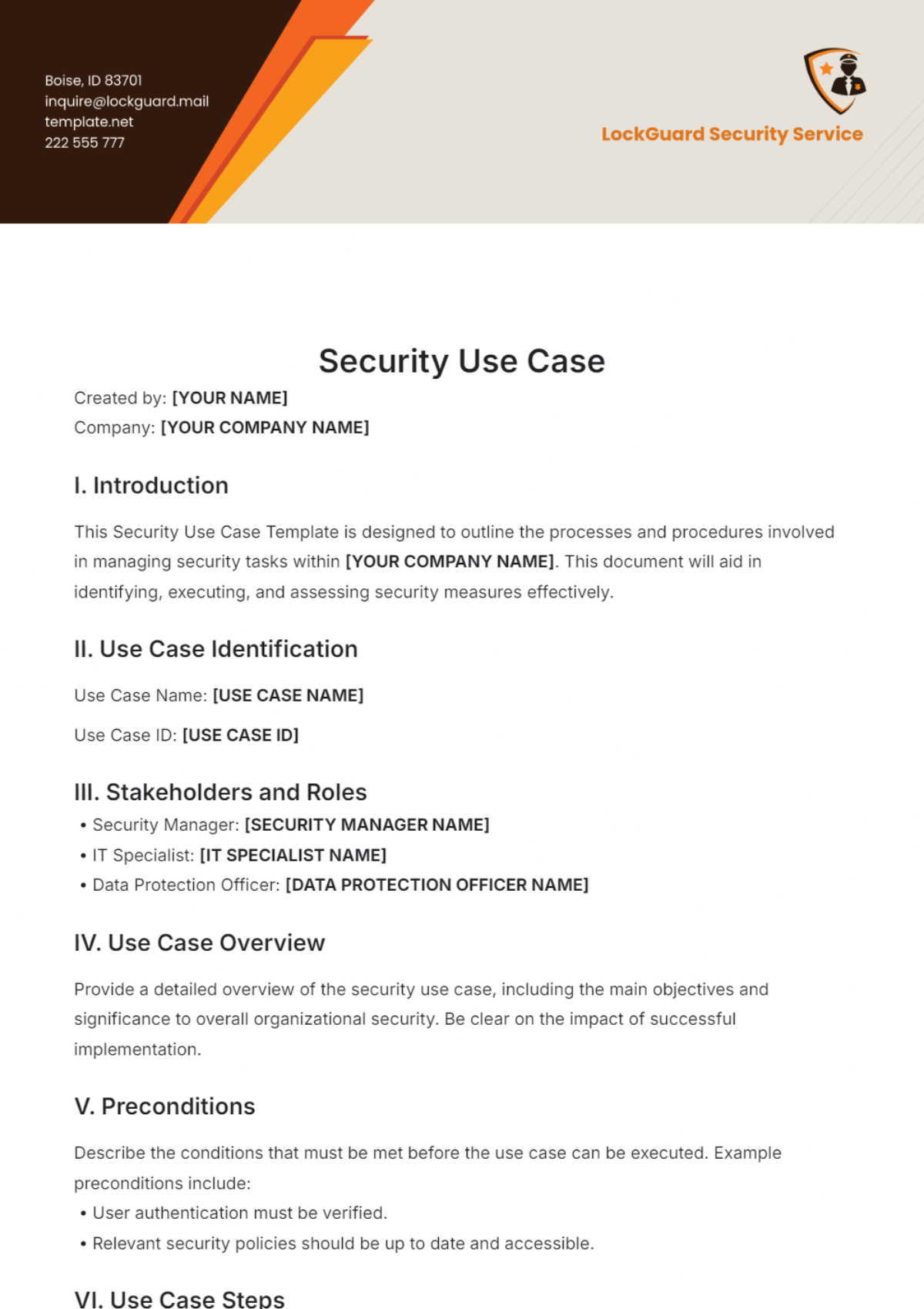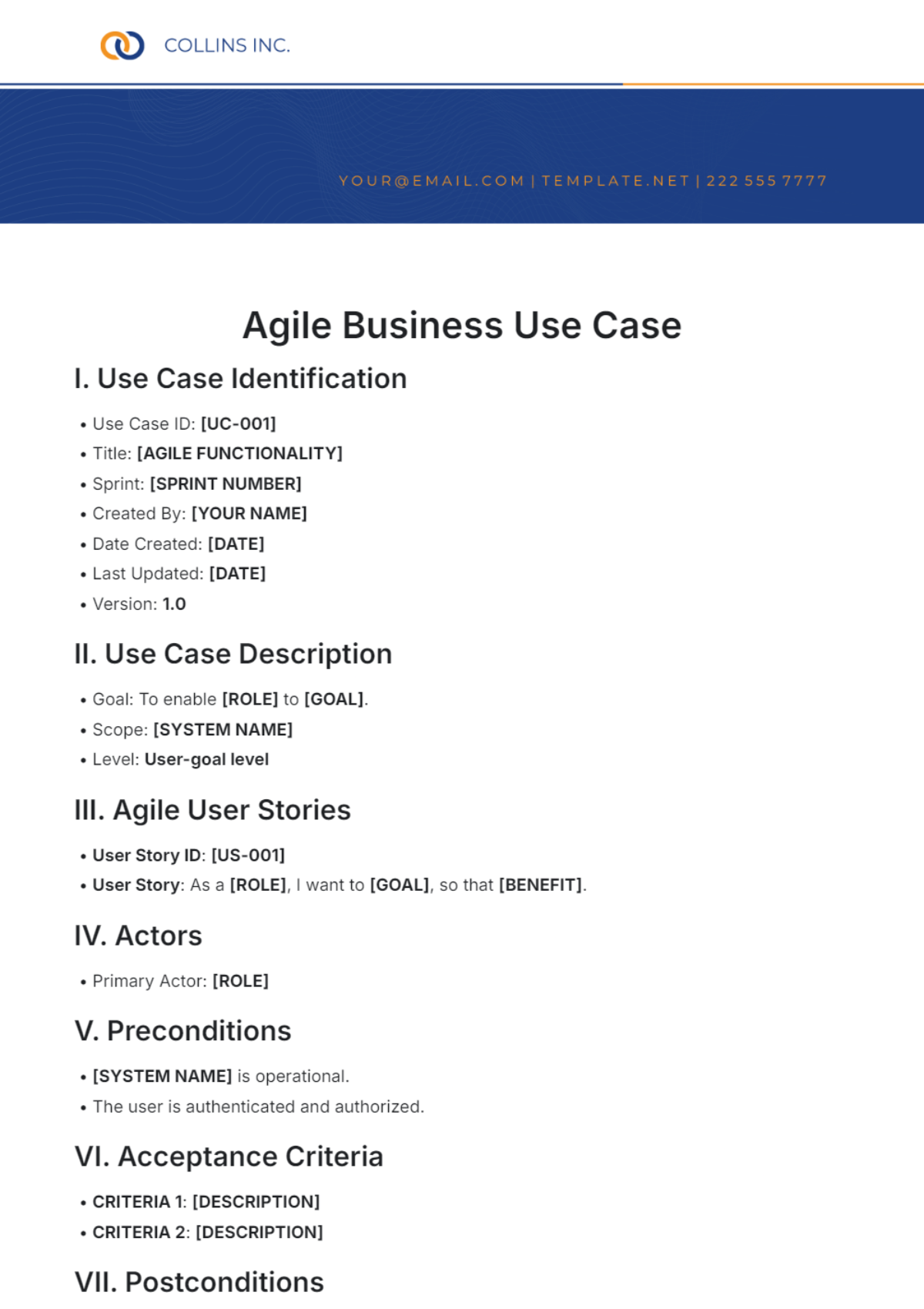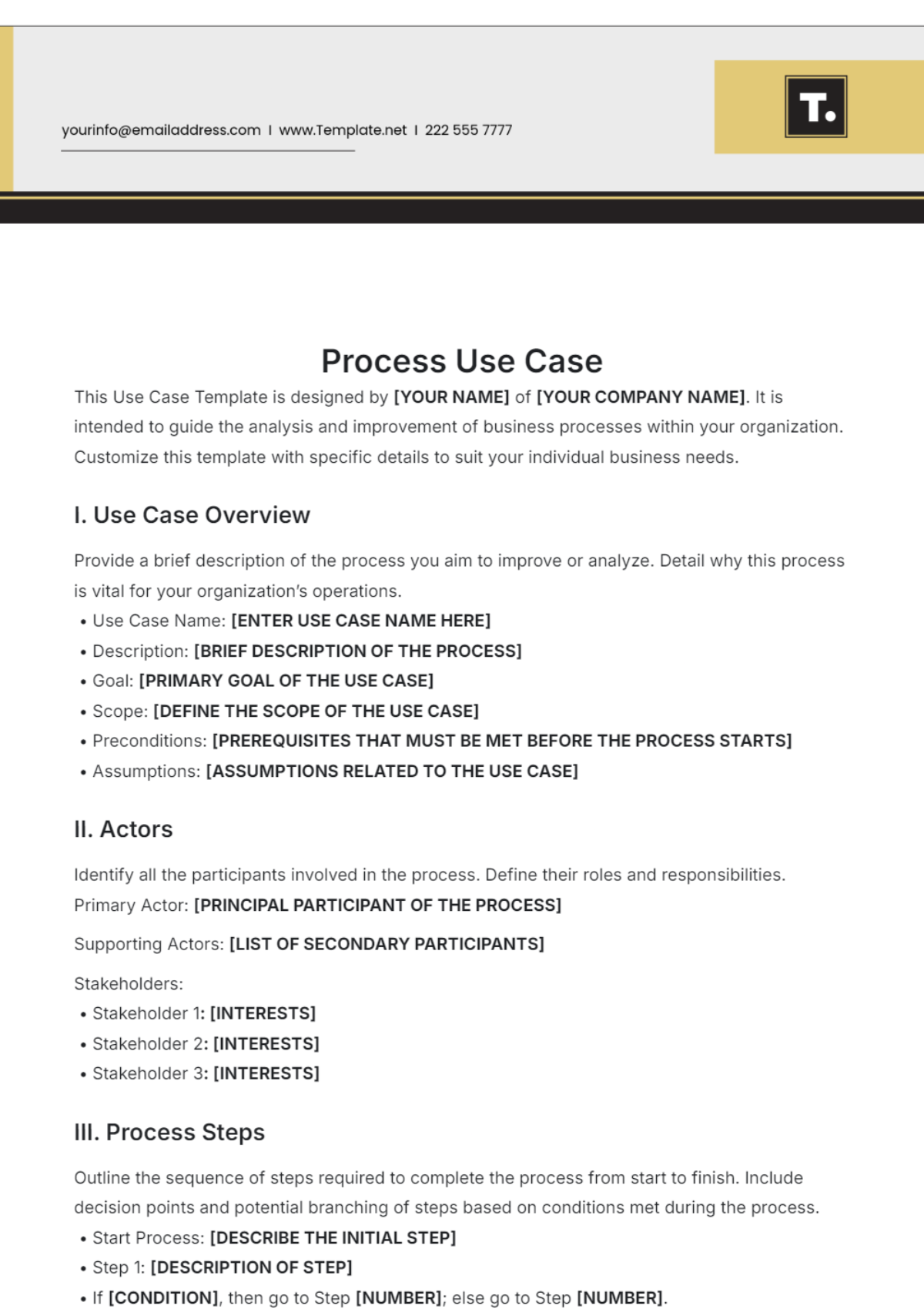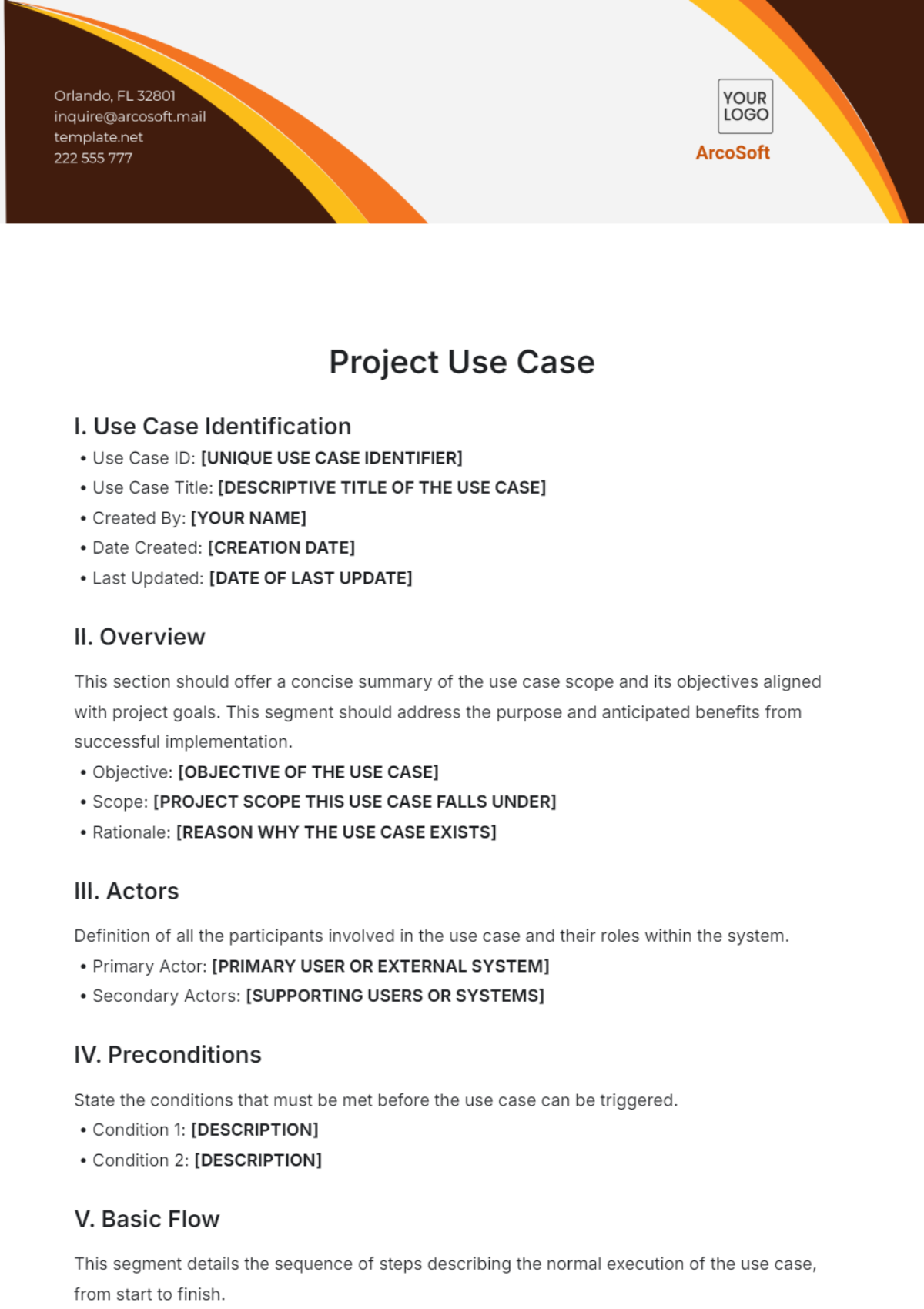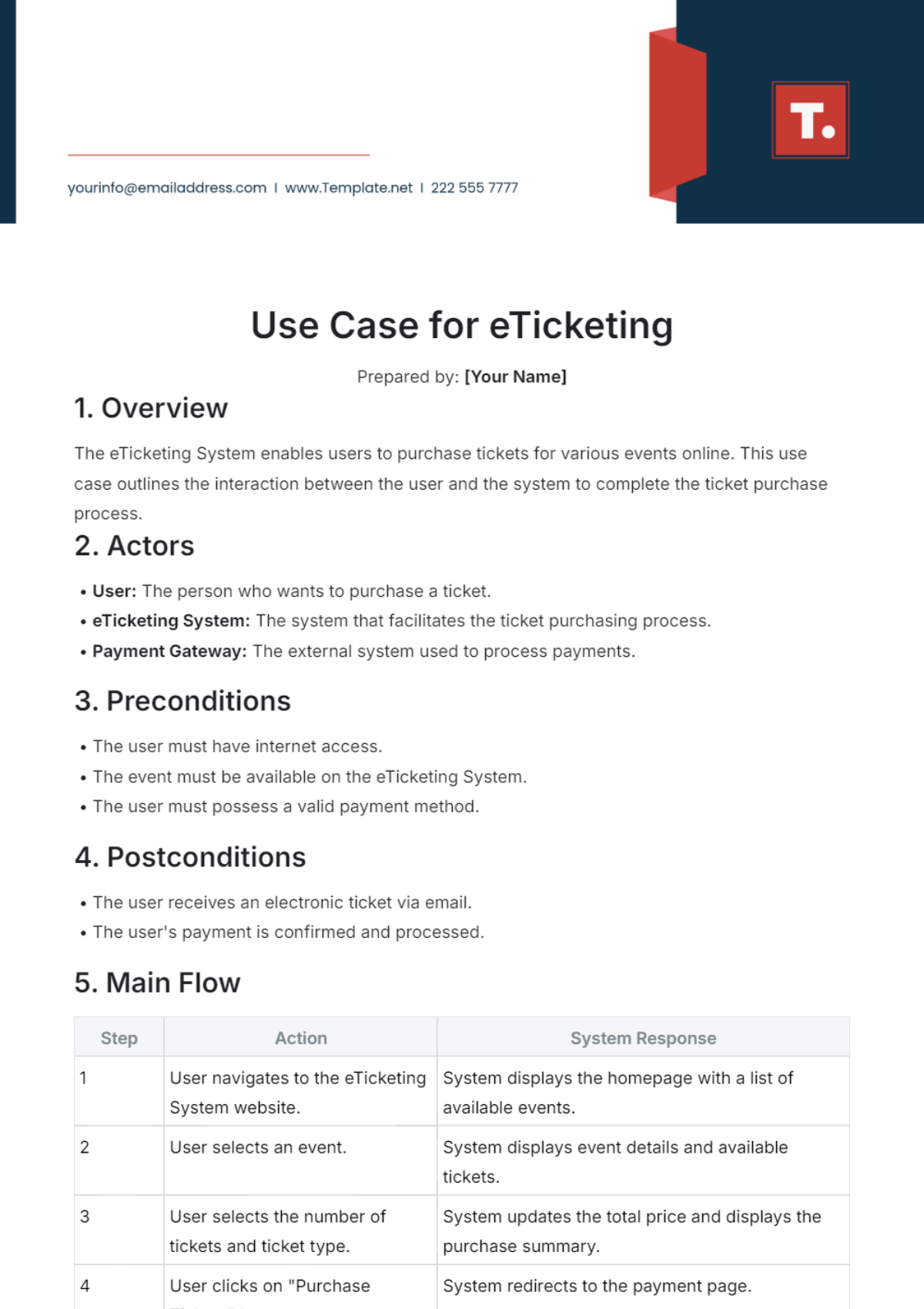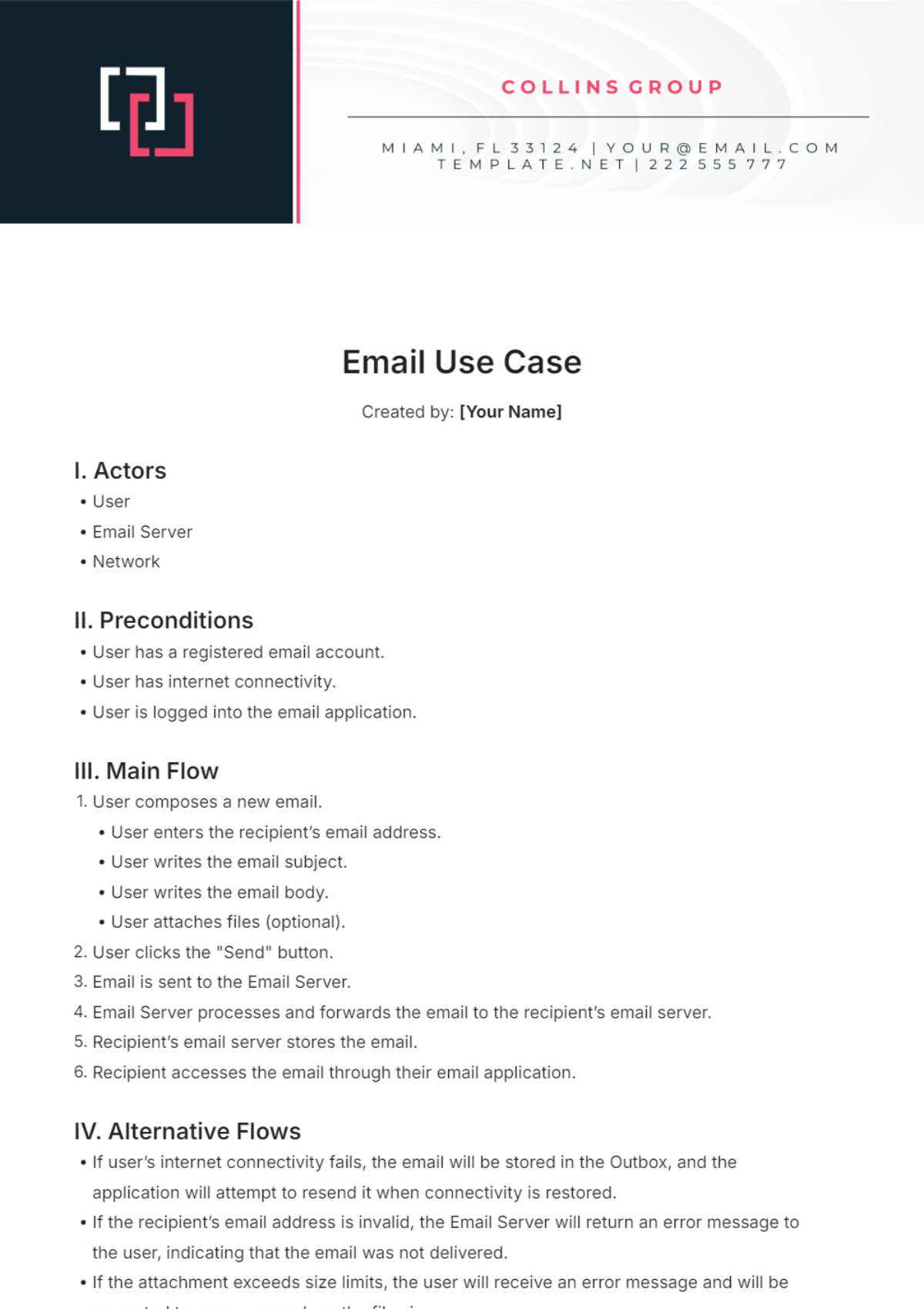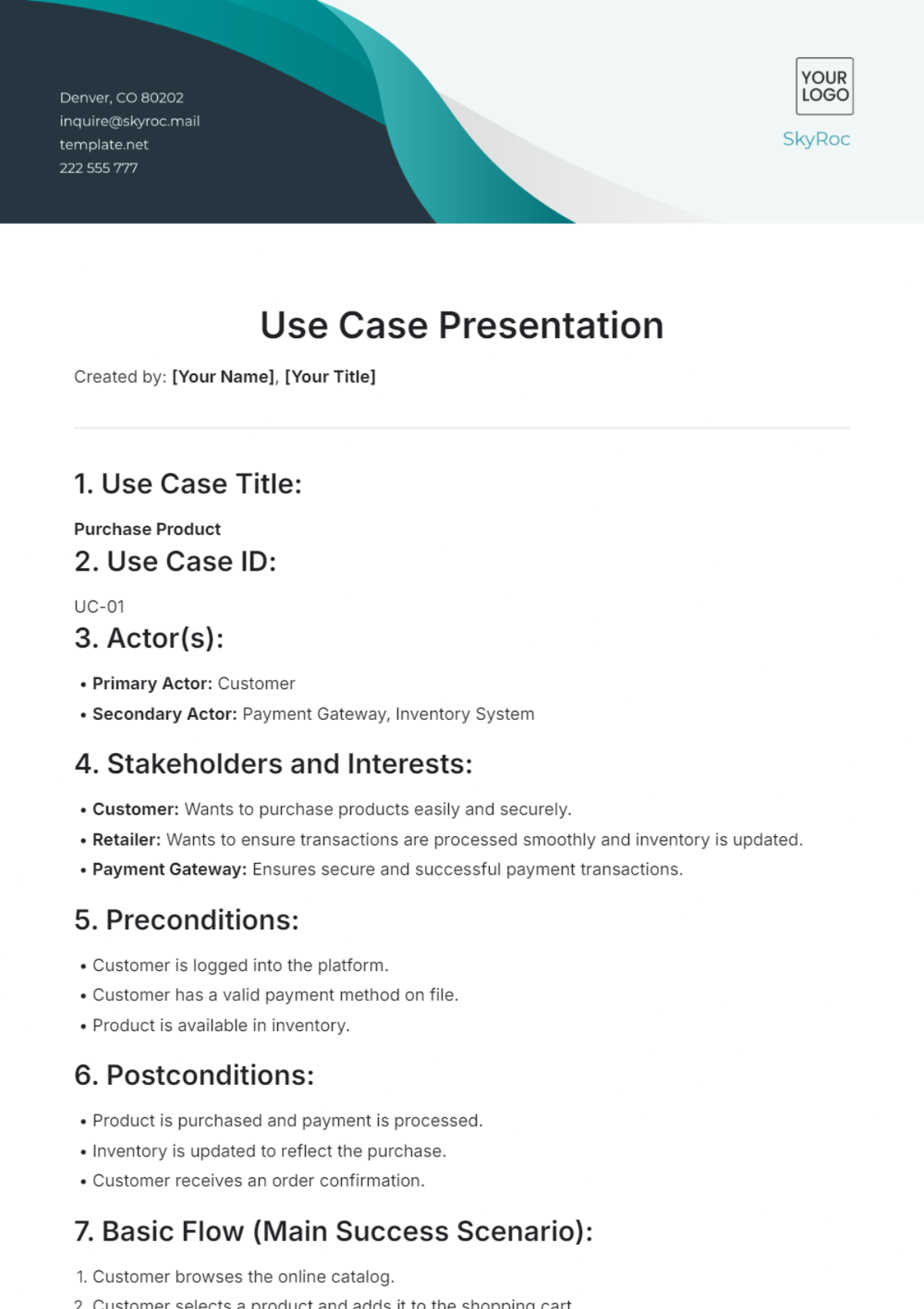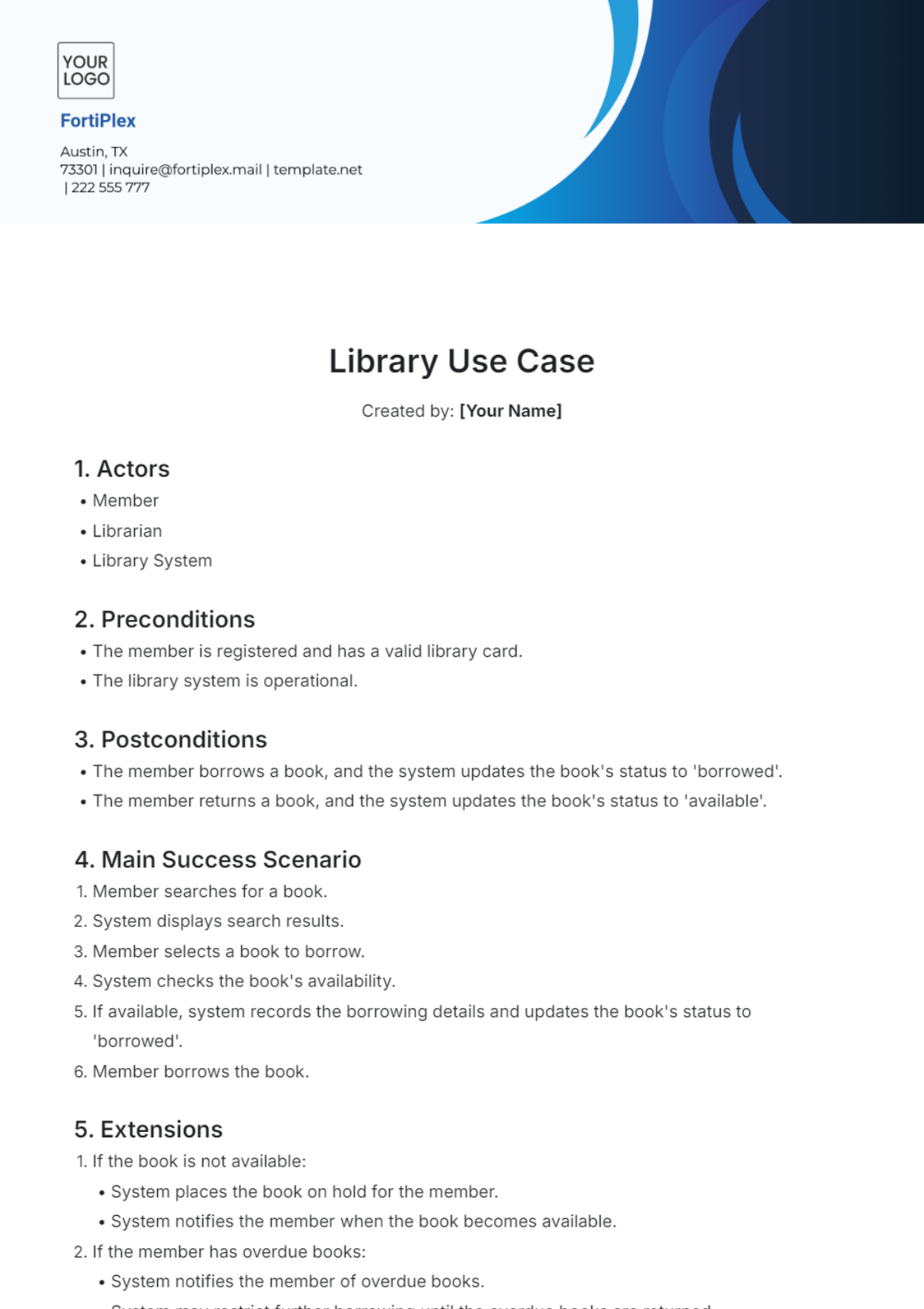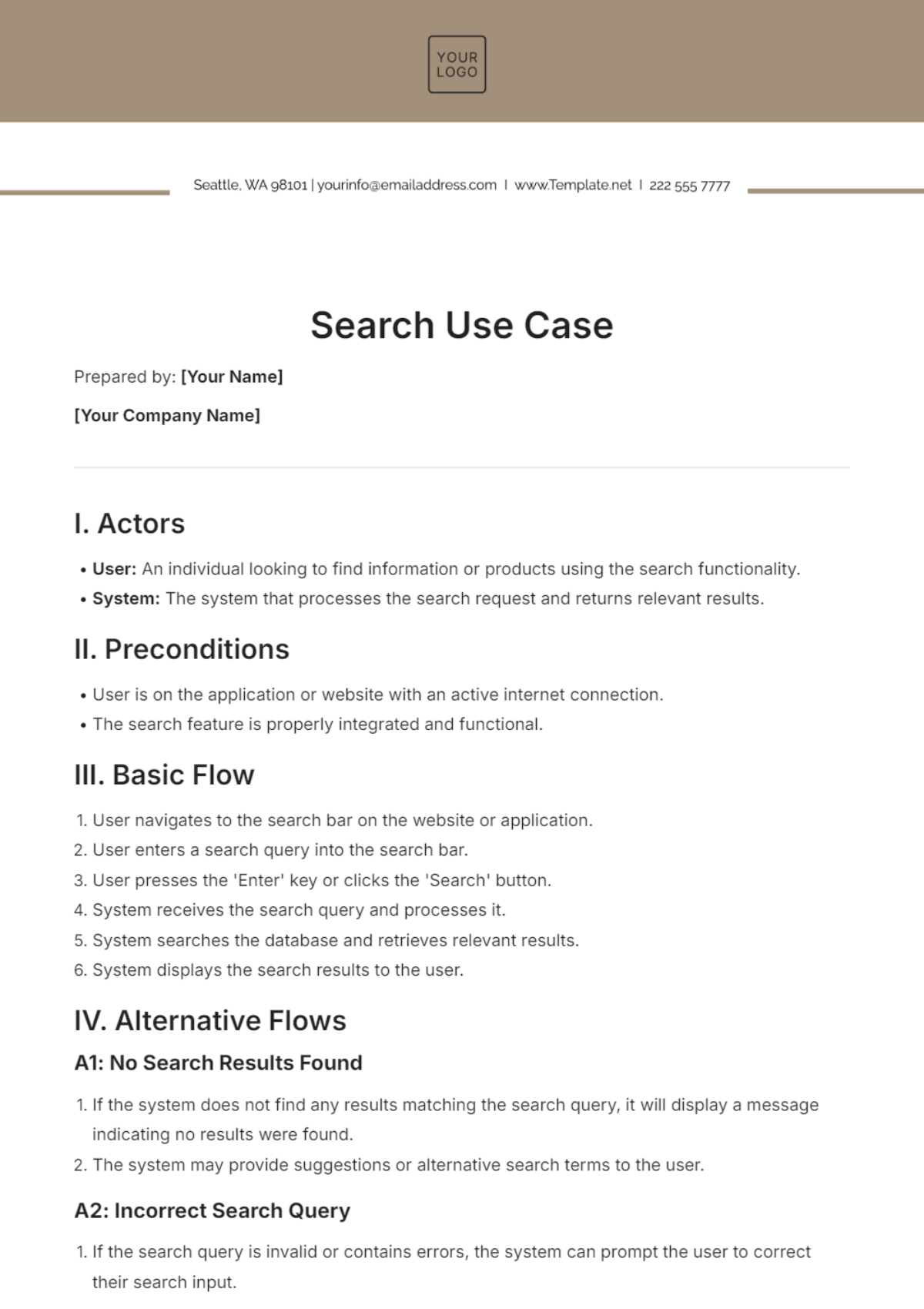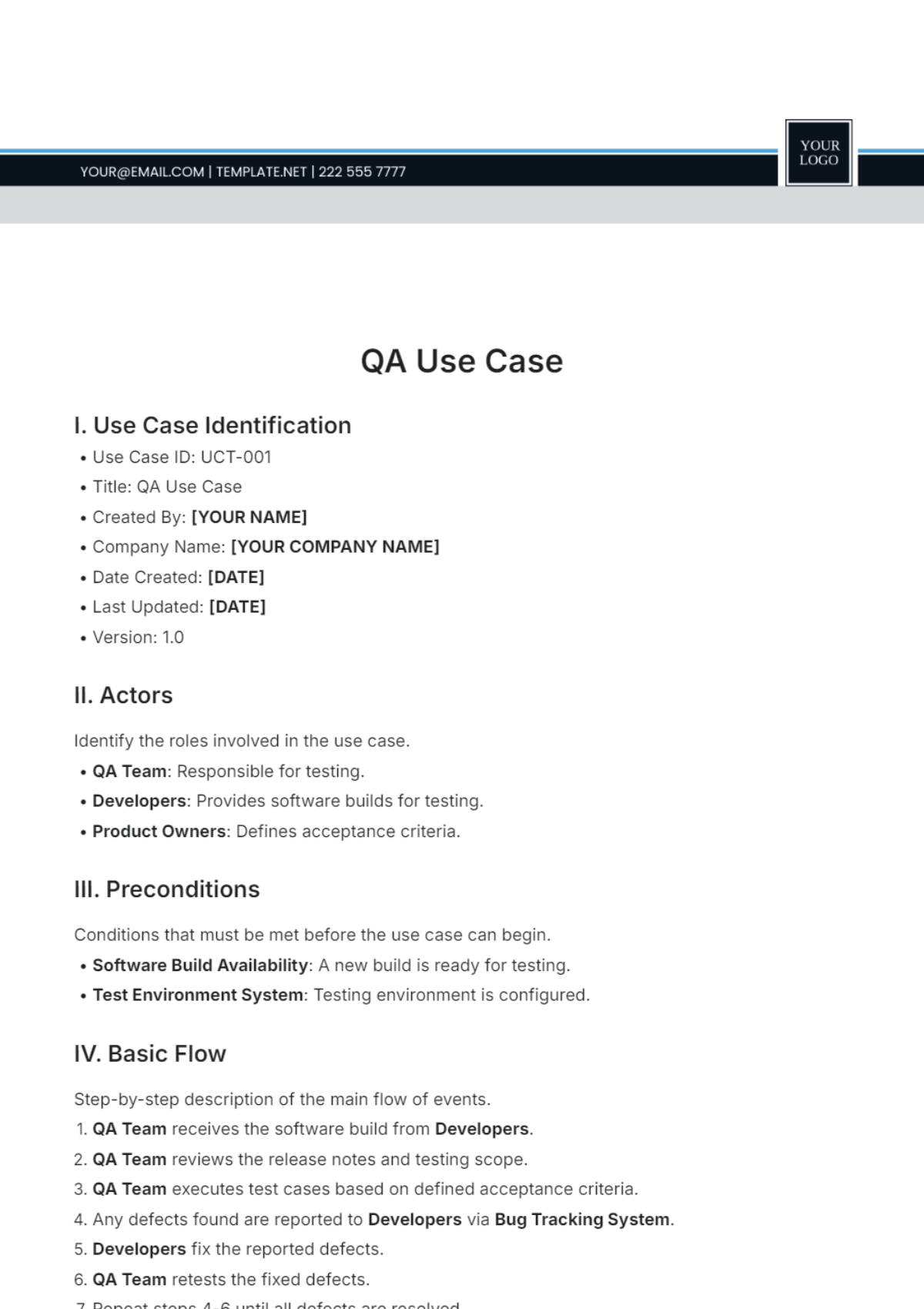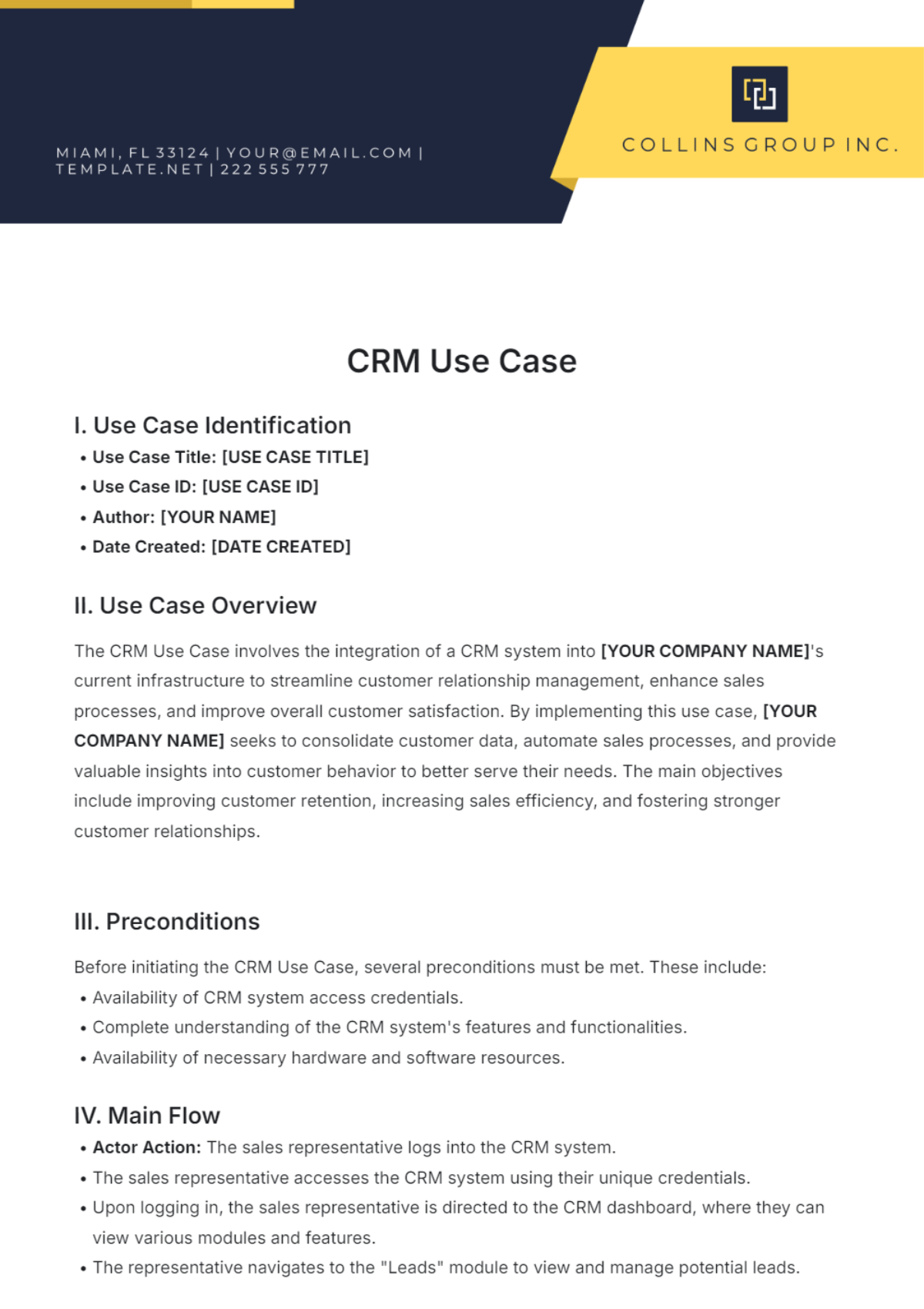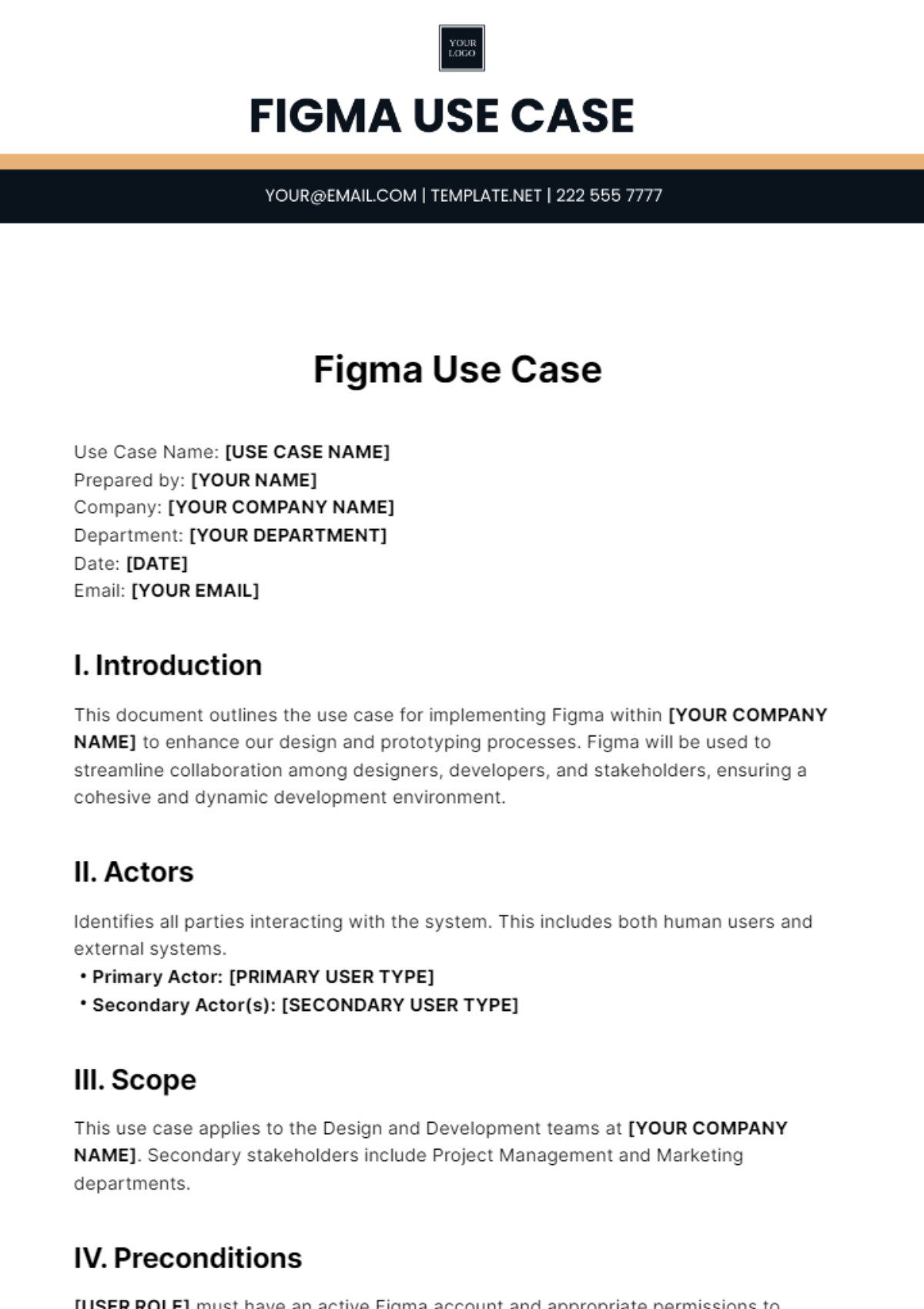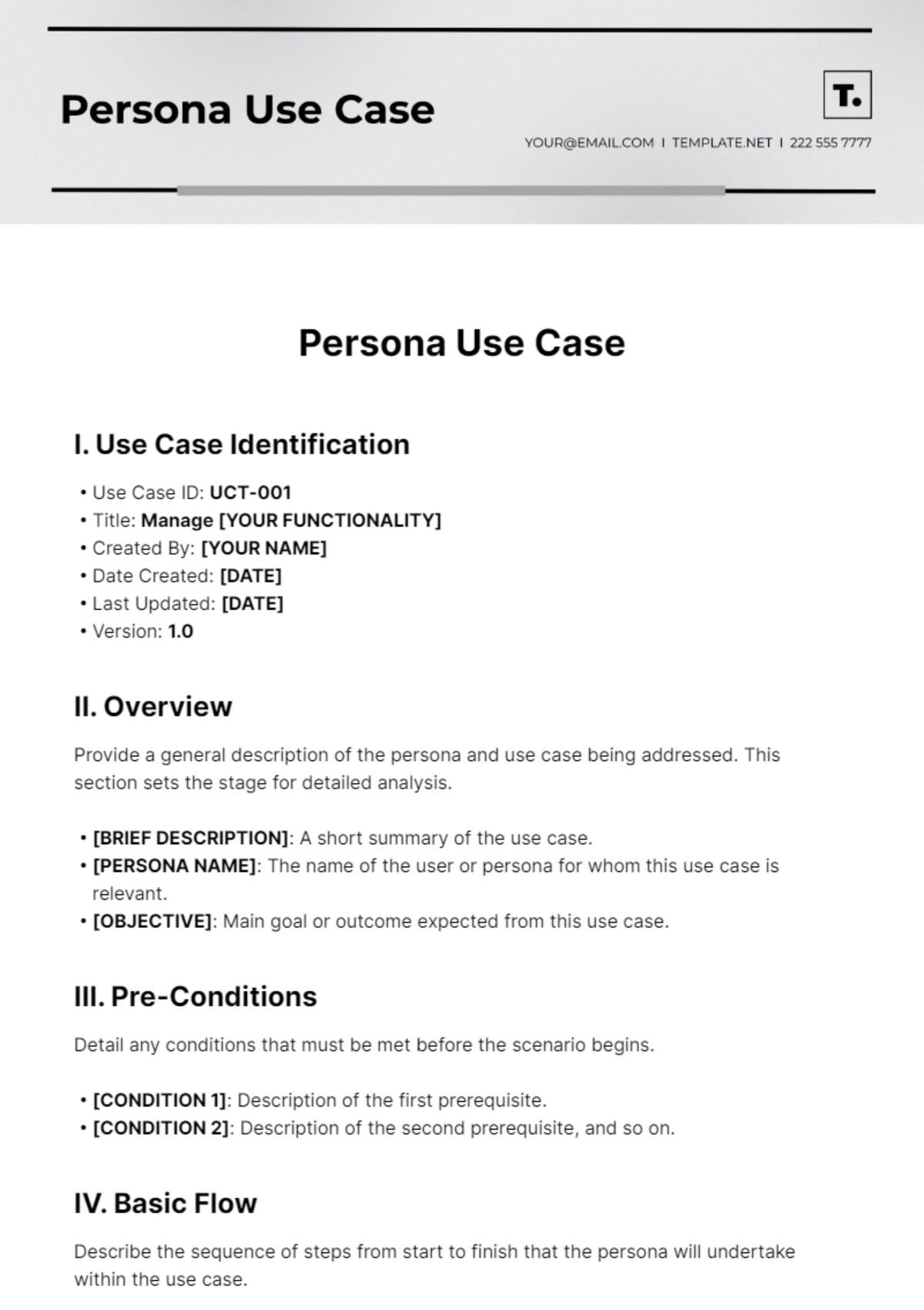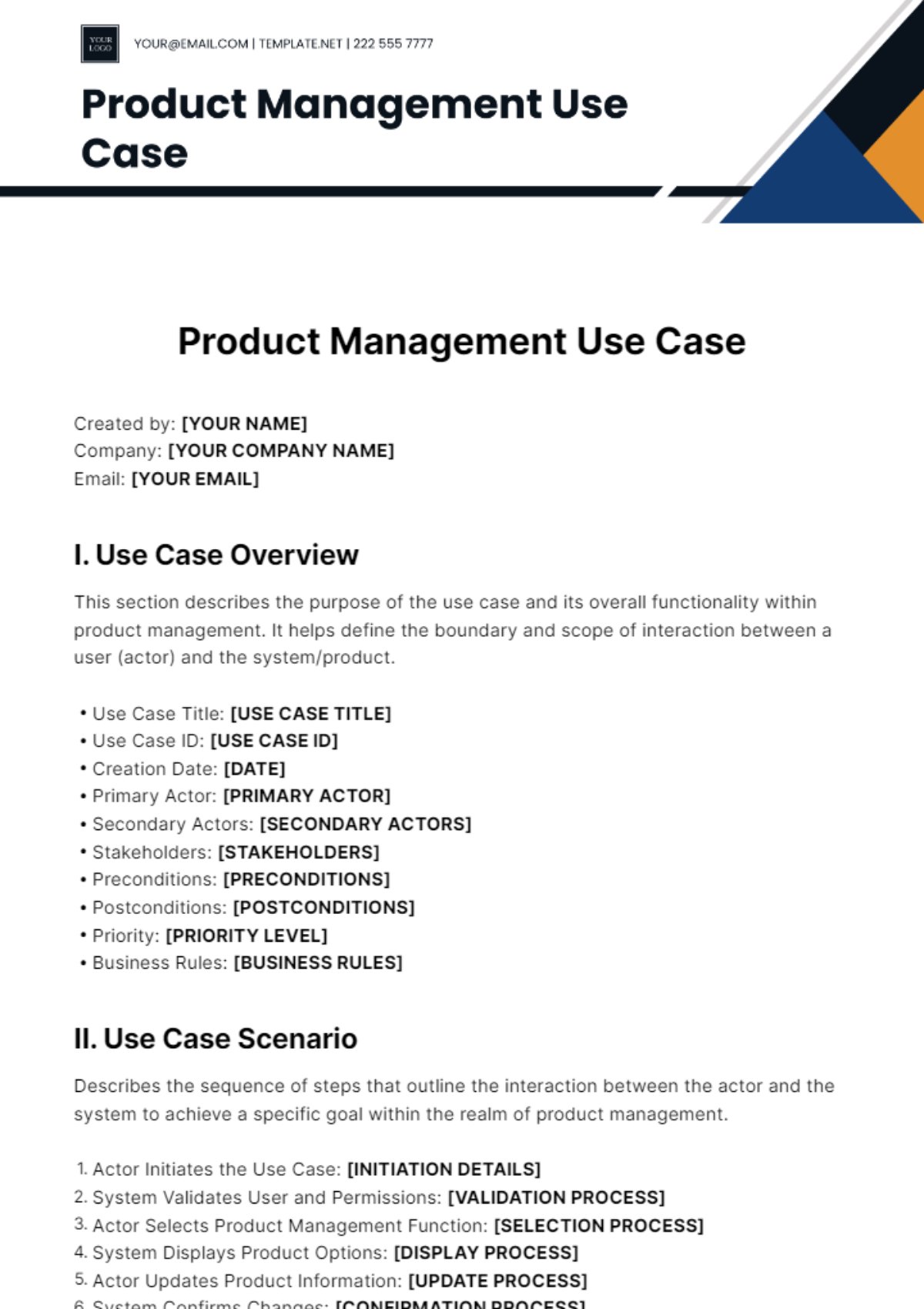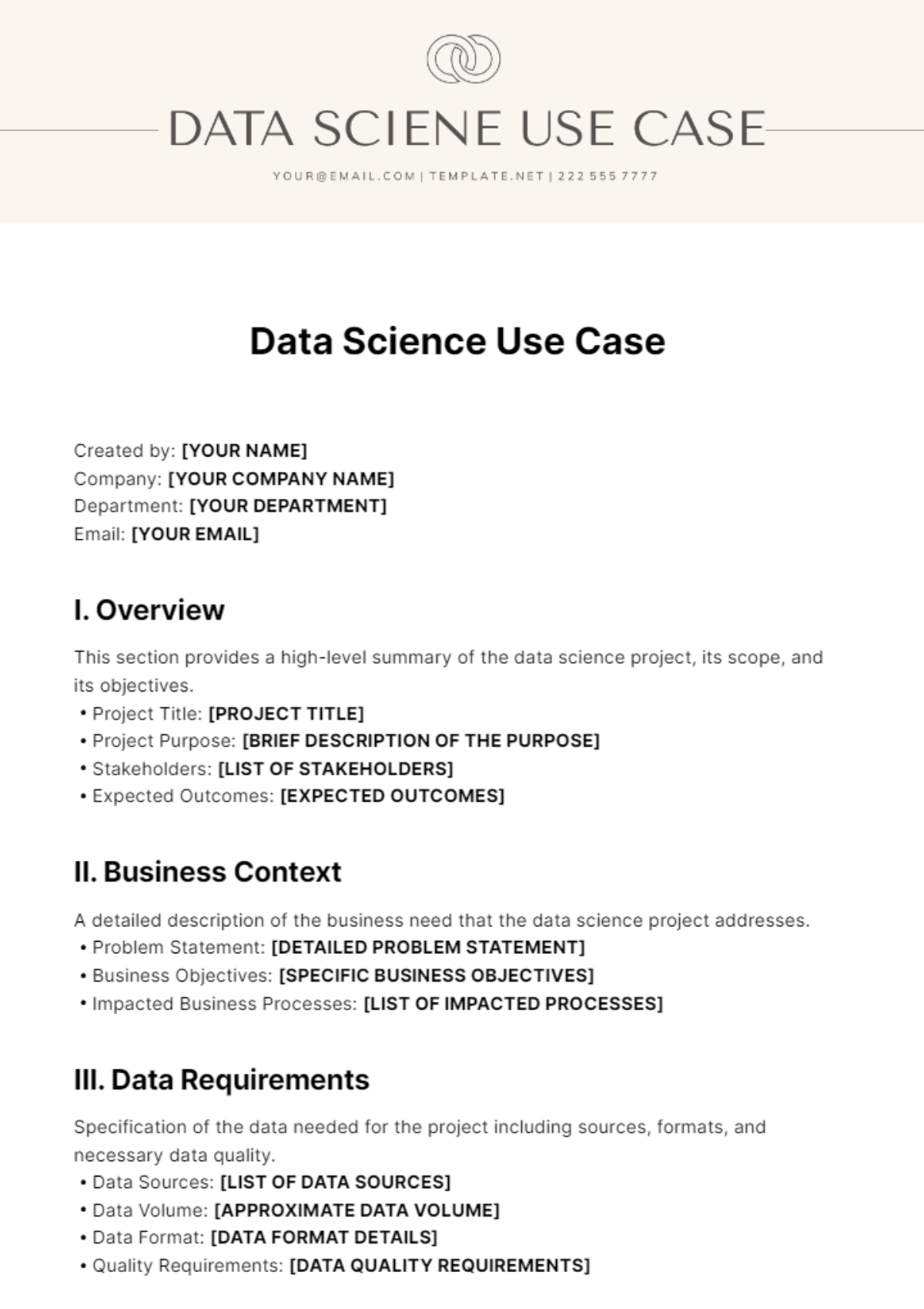QA Use Case
I. Use Case Identification
Use Case ID: UCT-001
Title: QA Use Case
Created By: [YOUR NAME]
Company Name: [YOUR COMPANY NAME]
Date Created: [DATE]
Last Updated: [DATE]
Version: 1.0
II. Actors
Identify the roles involved in the use case.
QA Team: Responsible for testing.
Developers: Provides software builds for testing.
Product Owners: Defines acceptance criteria.
III. Preconditions
Conditions that must be met before the use case can begin.
Software Build Availability: A new build is ready for testing.
Test Environment System: Testing environment is configured.
IV. Basic Flow
Step-by-step description of the main flow of events.
QA Team receives the software build from Developers.
QA Team reviews the release notes and testing scope.
QA Team executes test cases based on defined acceptance criteria.
Any defects found are reported to Developers via Bug Tracking System.
Developers fix the reported defects.
QA Team retests the fixed defects.
Repeat steps 4-6 until all defects are resolved.
Once testing is complete, QA Team provides test summary to Product Owners.
V. Alternative Flows
Describe any alternative paths or scenarios.
A. Defect Rejection
If a defect fix is rejected:
Developers and QA Team discuss the rejection reasons.
Developers rework the fix and provide an updated build.
QA Team retests the fix.
VI. Postconditions
Conditions that must be true after the use case is completed.
Defects Resolved: All reported defects are fixed.
Test Summary Generated: Summary report is provided to Product Owners.
VII. Exceptions
List any exceptions or errors that may occur during the execution.
Build Failure: Build is not deployable for testing.
Critical Defects: Defects impacting core functionality.
VIII. Special Requirements
Any additional requirements or considerations.
Automation Tools: Use of automation for regression testing.
Accessibility Testing: Ensure software complies with accessibility standards.
IX. Assumptions
Assumptions made for the use case.
Test Data Availability: Relevant test data is accessible.
Testing Resources: Sufficient resources allocated for testing.
X. References
List of documents or resources referenced in the use case.
Software Requirements Specification
Test Plan
Bug Tracking System


